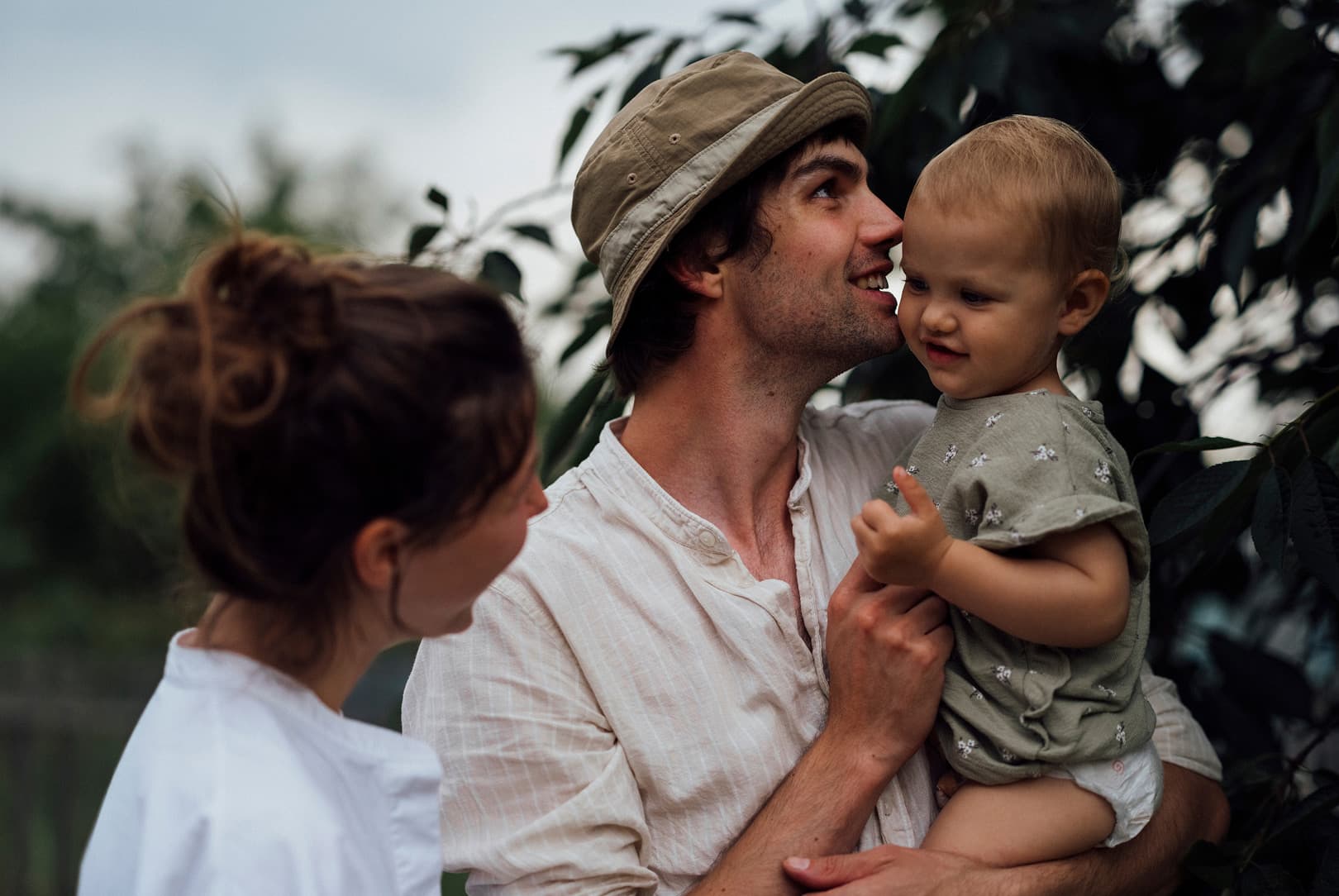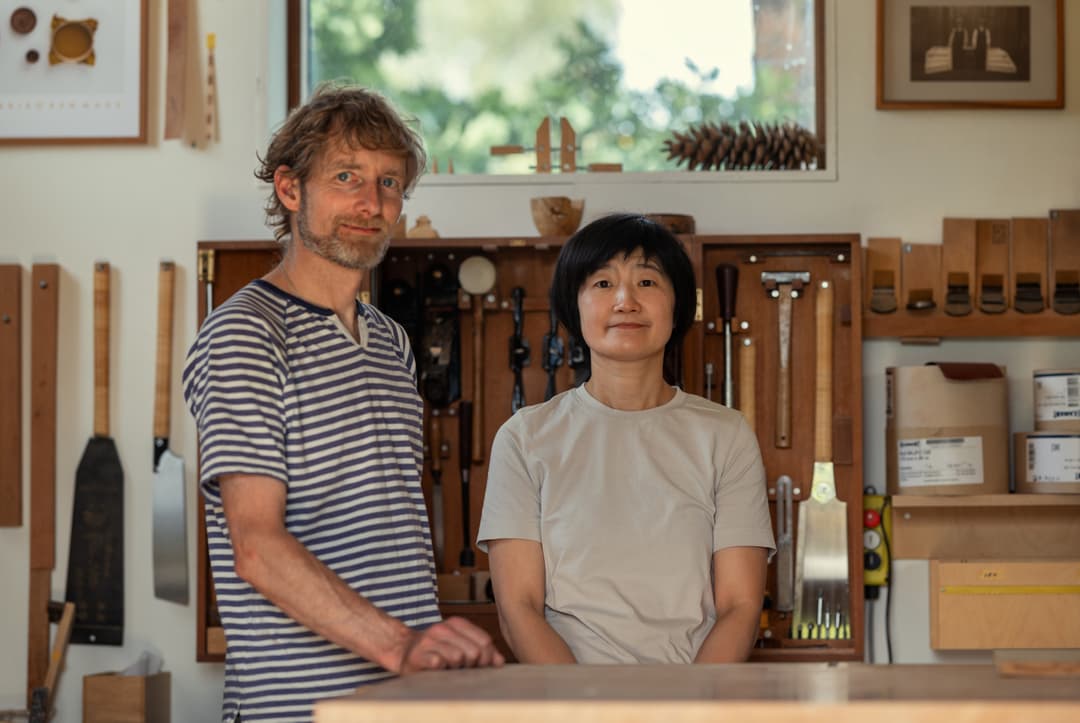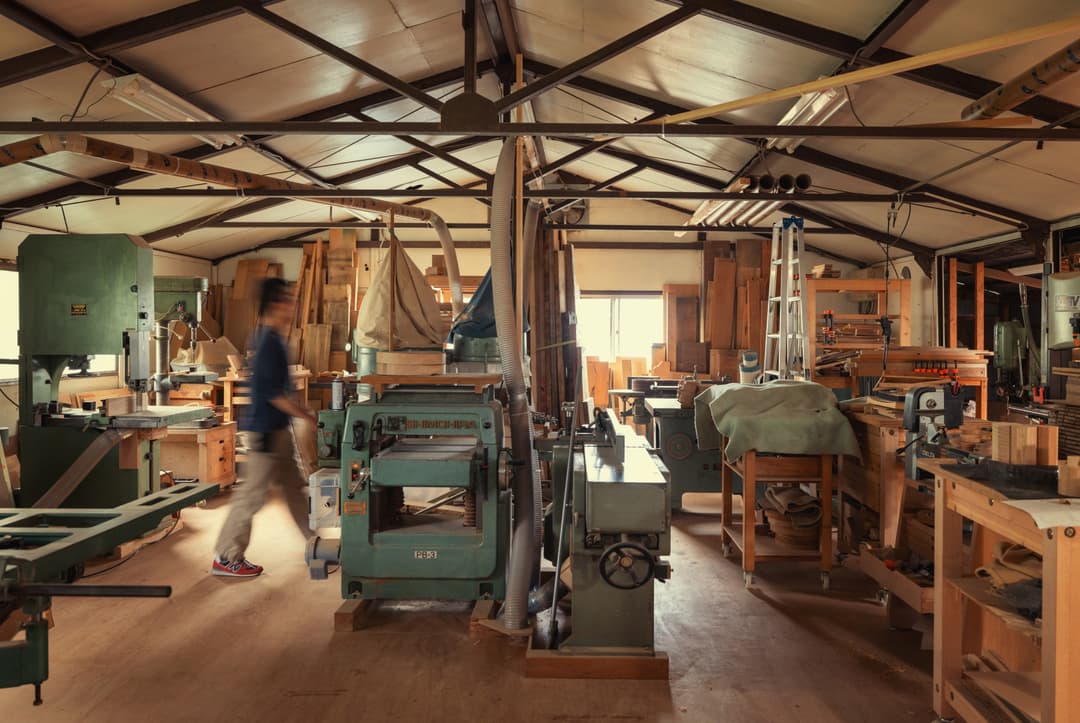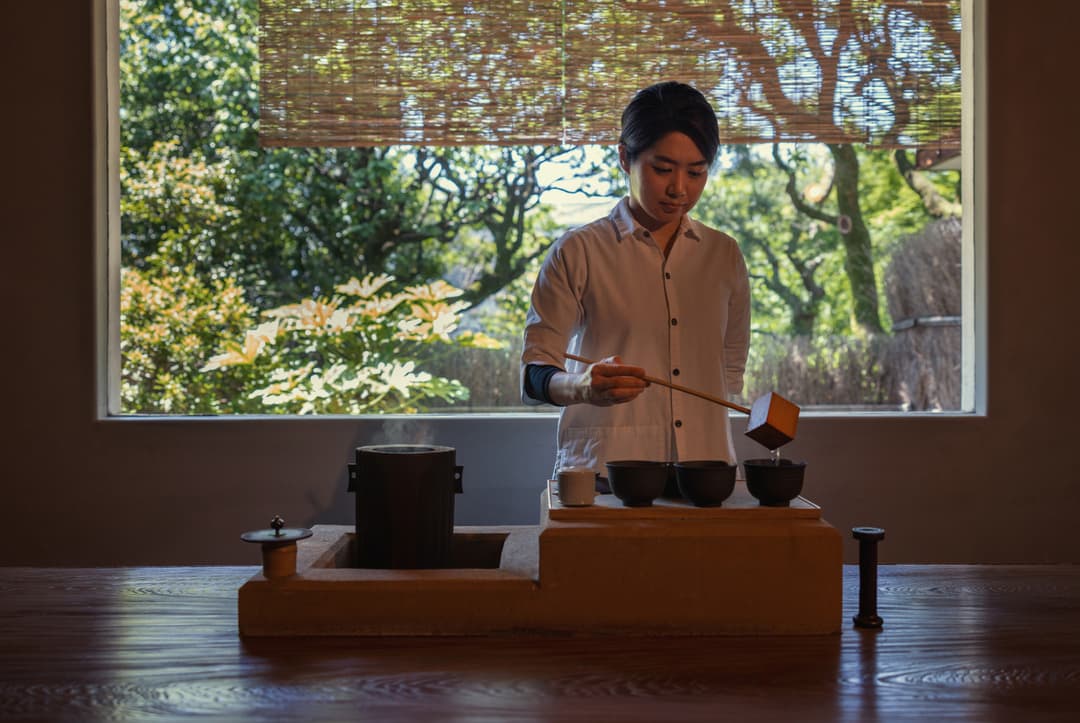
Play Movie

Listen
to Katherine Kennard
reading this story
CARVED BY HAND
Samuel Alexander
Prušánky exudes a stillness that feels almost cinematic. As we drive through the sun-drenched streets, neatly lined with small houses – some whitewashed, others in faded pastels – with lace curtains framing the darkened windows, we notice few signs of life. The odd car passes by, but no one on foot. A quietness pervades, resonating with it a complex history and deep traditions.
Nestled among gentle hills, vineyards and farmland in the South Moravian Region of Czechia, near the Slovak and Austrian borders, the village is rooted in agriculture and follows a seasonal cadence. Time here is marked by grape harvests, folk customs, church-led processions and local festivals, and the 2,000 residents tend to be largely self-reliant, with vegetable gardens, cellars and homemade preserves. There’s little need for constant activity.
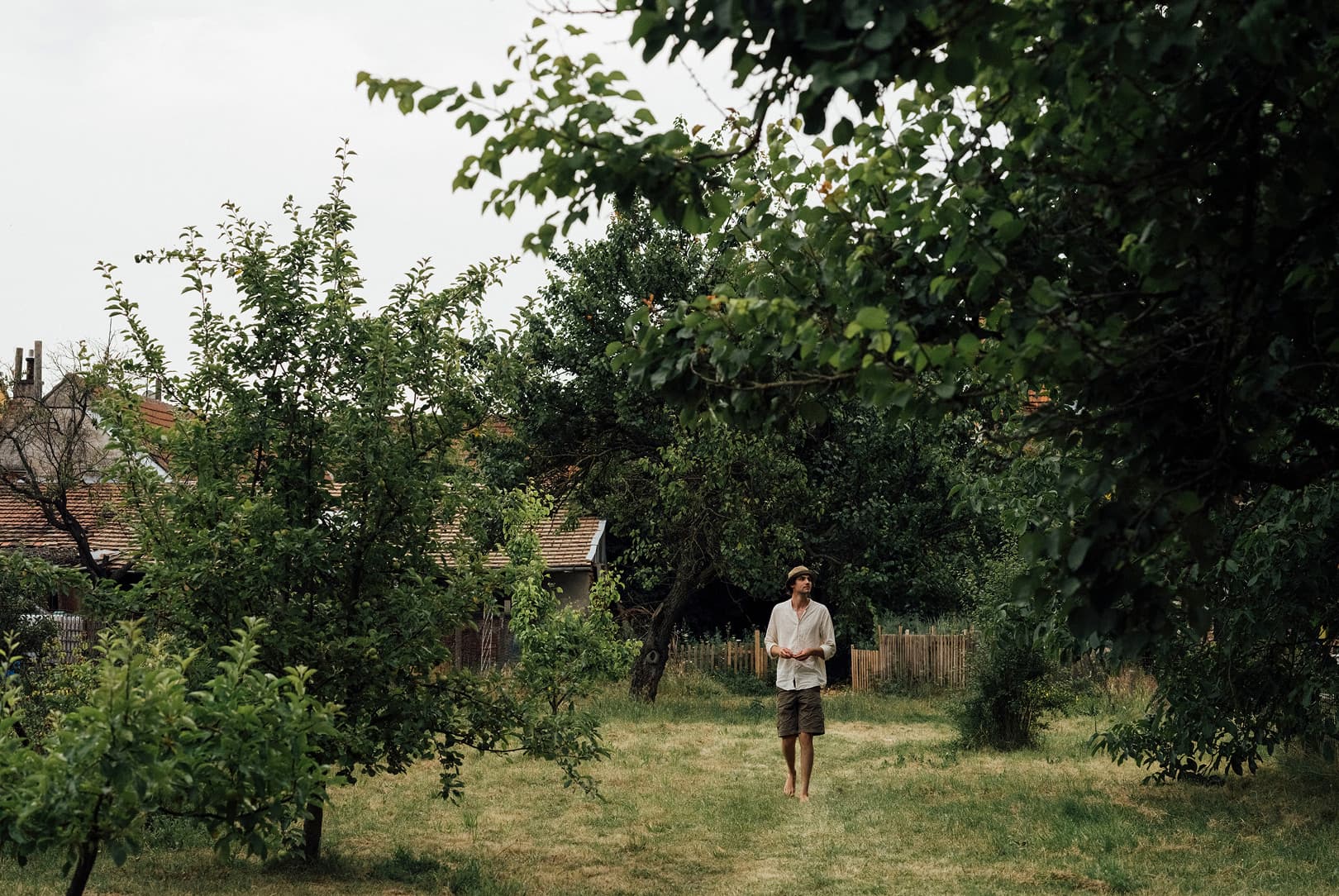
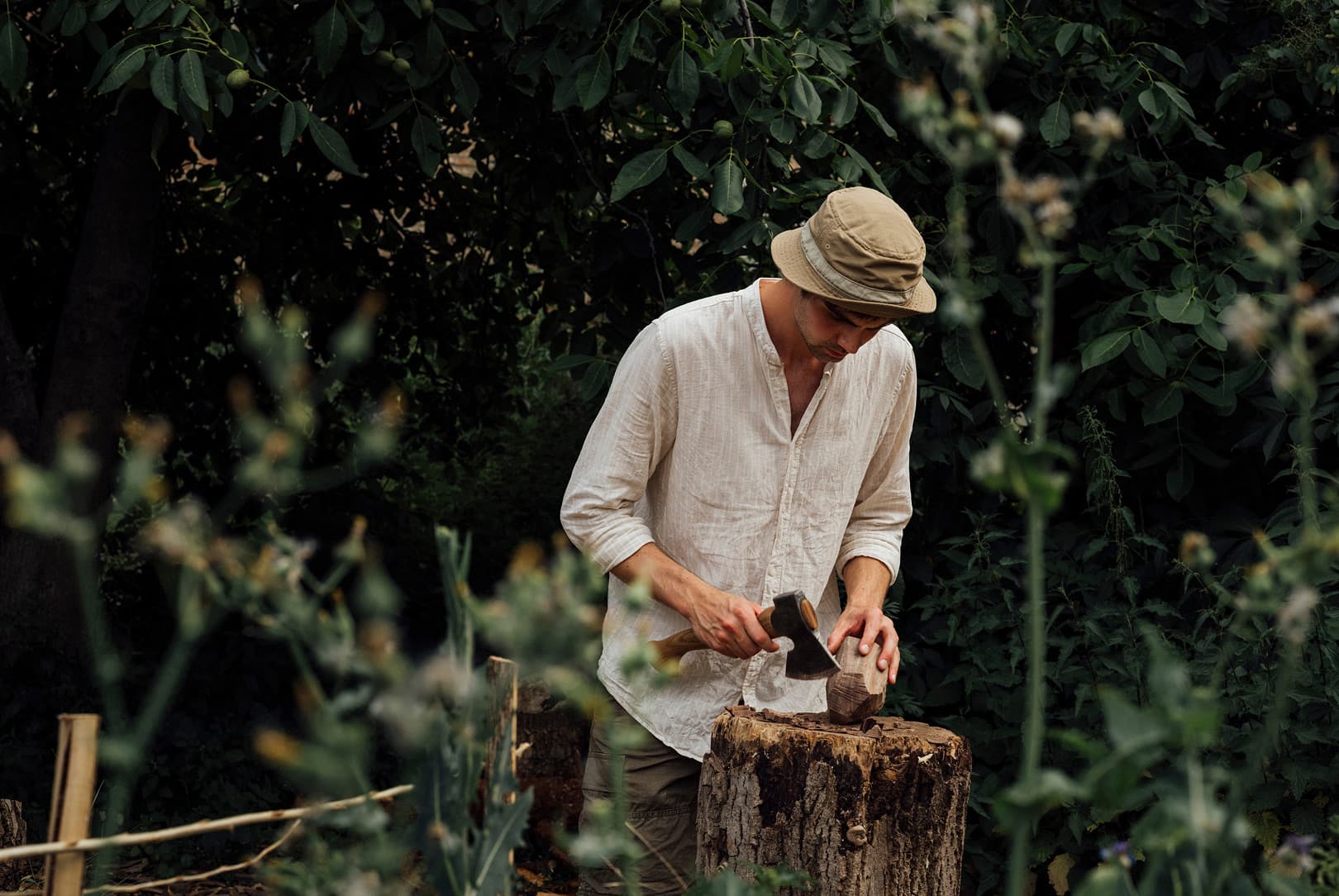
While many young locals leave the slower-paced life for bigger cities, Samuel Alexander has deliberately done the opposite. The British-born green-wood carver swapped London for Prušánky not long before the birth of his daughter, Nora, to move into the childhood home of his wife, Kateřina, next-door to her parents and grandmother. For him, it was “inspired by wanting to be present with our new family, to have more time to raise our sapling,” as he later describes.
Our car now rounds a bend on the outskirts of the village, taking us to the end of a narrow cul-de-sac. It appears as though the road simply stops, rather than neatly finishing – with the potential, perhaps, of one day being extended into the green field beyond. A row of established homes sits behind well-tended front gardens and, on the opposite side, open parkland with a modest playground and thickets of trees. The air is fresh, the sun hot and the only sounds are of gentle birdsong and the rumblings of a distant lawnmower or tractor.
“Usually, I get up as early as I can to spend time with my daughter. Then I make this journey through the orchard to the workshop. In summer, I’ll often harvest my breakfast along the way.”
Samuel Alexander
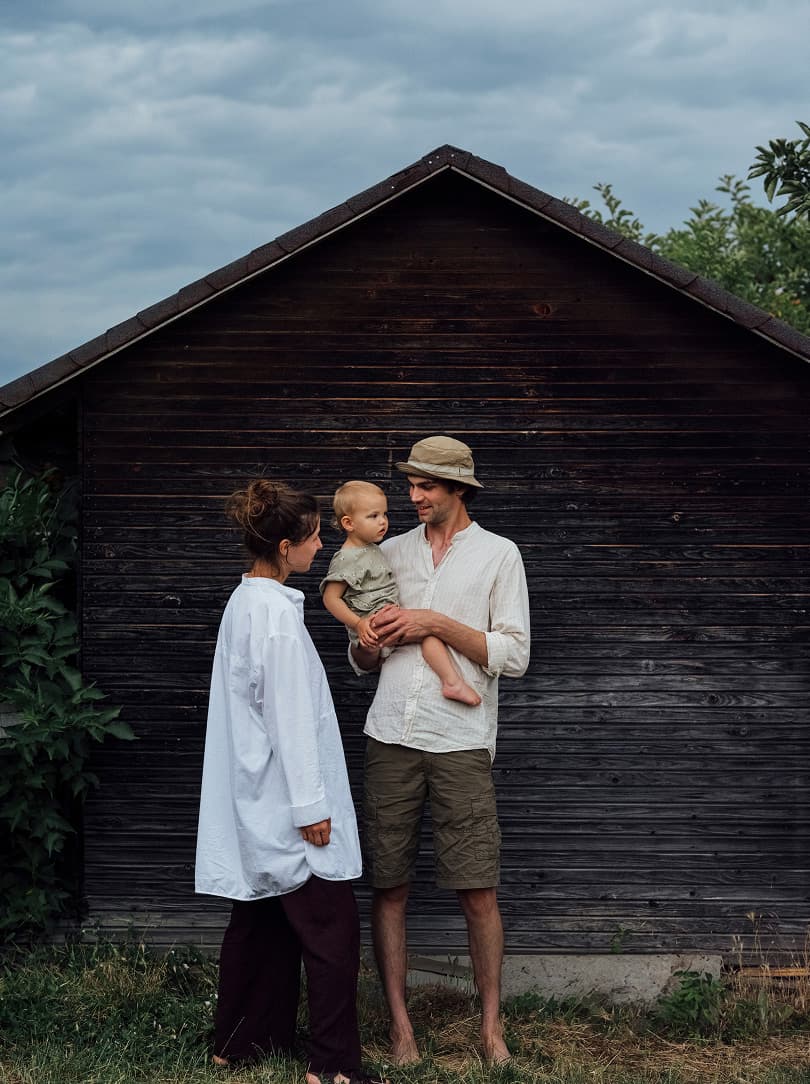
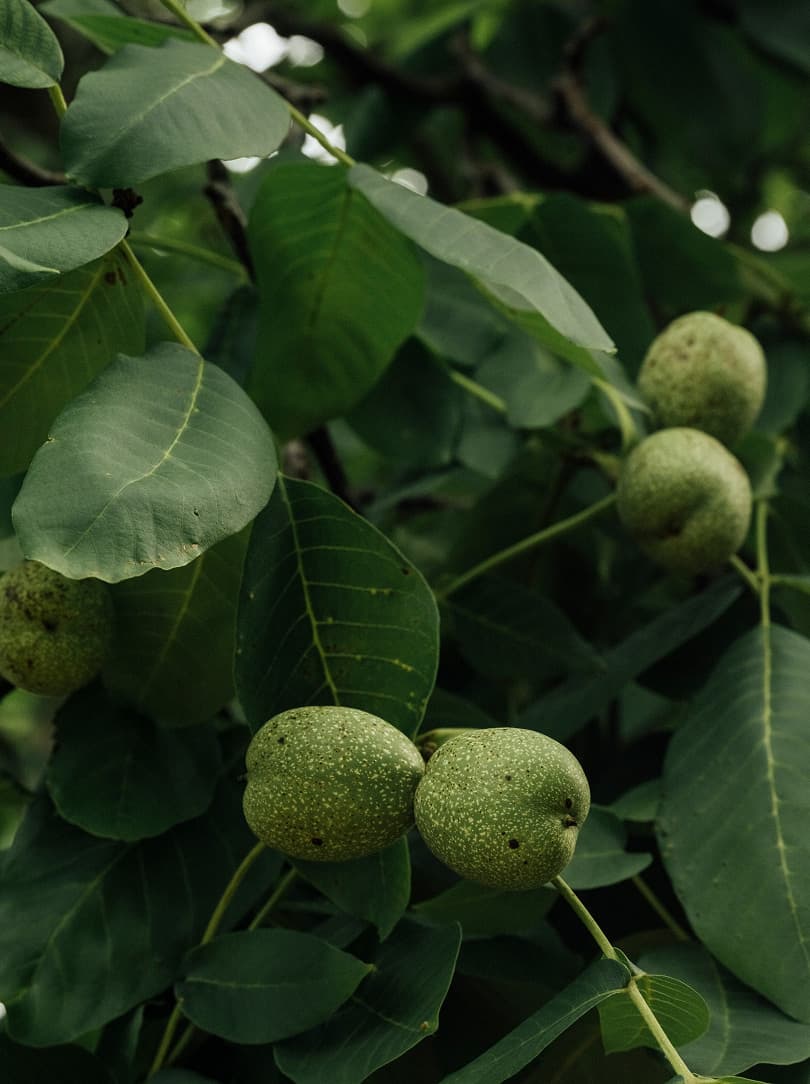
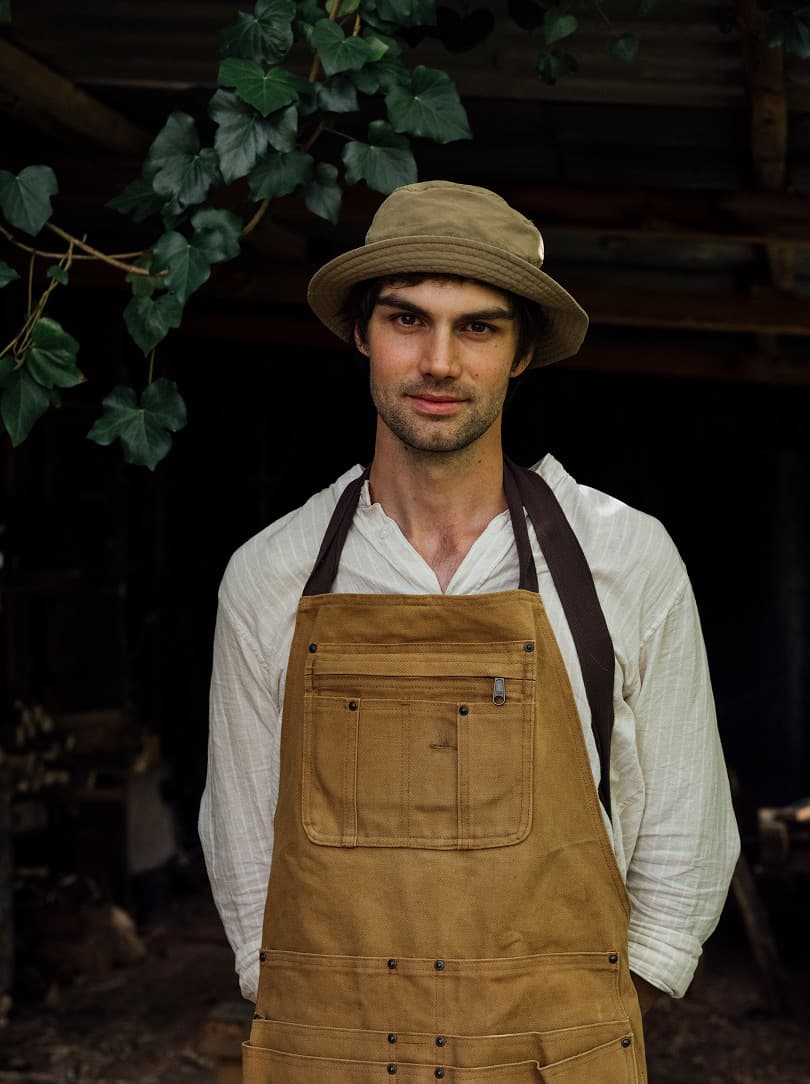
Moments later, we are greeted at the door of the last house by a broadly smiling Samuel. Tall, slim and barefoot, in a beige linen shirt with the sleeves rolled up, khaki cargo shorts and a well-loved darker beige cotton bucket hat covering his short dark hair, he politely introduces himself in a clear, soft English voice. He leads us through the wide garage to the back of the house, where we encounter Kateřina, carefully making her way down a metal spiral staircase connecting the second-storey terrace and the garden, wearing a billowy white shirt and loose burgundy trousers, long hair swept up in an effortless topknot, with blue-eyed Nora in her arms. Equally warm and welcoming, she invites us upstairs to the kitchen for cool drinks made with fruit and herbs from their orchard and vast vegetable garden, and some freshly baked blondies studded with raspberries, made by Kateřina’s mother.
Feeling refreshed and already a little enchanted by the calm of this place, we follow Samuel on the short walk to his workshop at the far end of the property. We pass through the garden next-door past a covered pool that looks almost impossibly inviting on such a scorching day, and out a back gate into a grassy field and orchard. Ripe red cherries hang like jewels from a broad-leaved tree. Fallen apricots lie scattered beneath another. Small green apples dangle, bright and tempting.
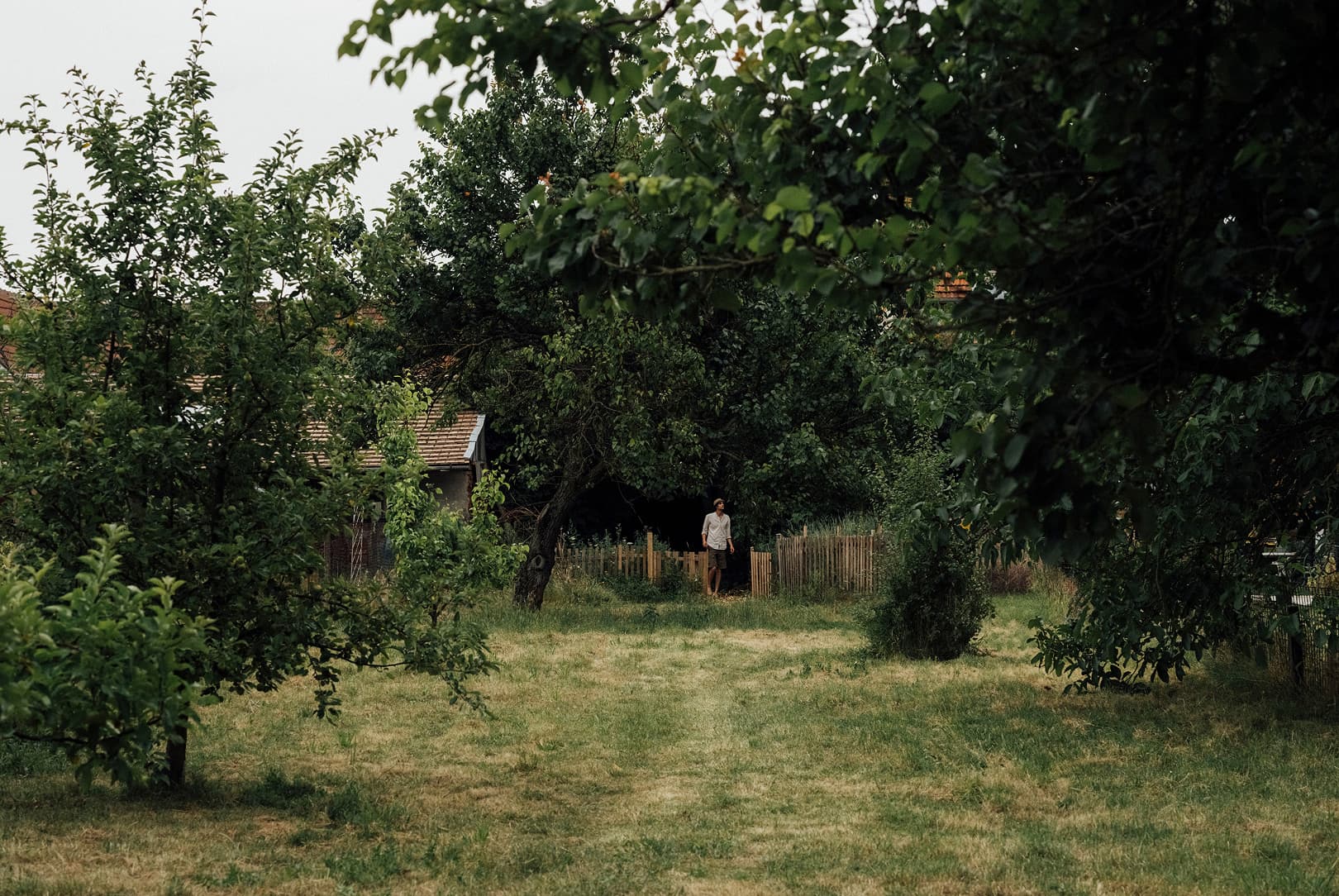

Long dry grass, softly rustling, brushes at our ankles as we walk. Samuel chats about his typical day: “Usually, I get up as early as I can to spend time with my daughter. Then I make this journey through the orchard to the workshop. In summer, I’ll often harvest my breakfast along the way.” He picks an apricot, smiles and gestures for us to help ourselves. “Then I begin by drawing,” he continues. “Sometimes I have a plan, sometimes a schedule – but the best days, the most rewarding ones, begin with just splitting off a log and enjoying the making.”
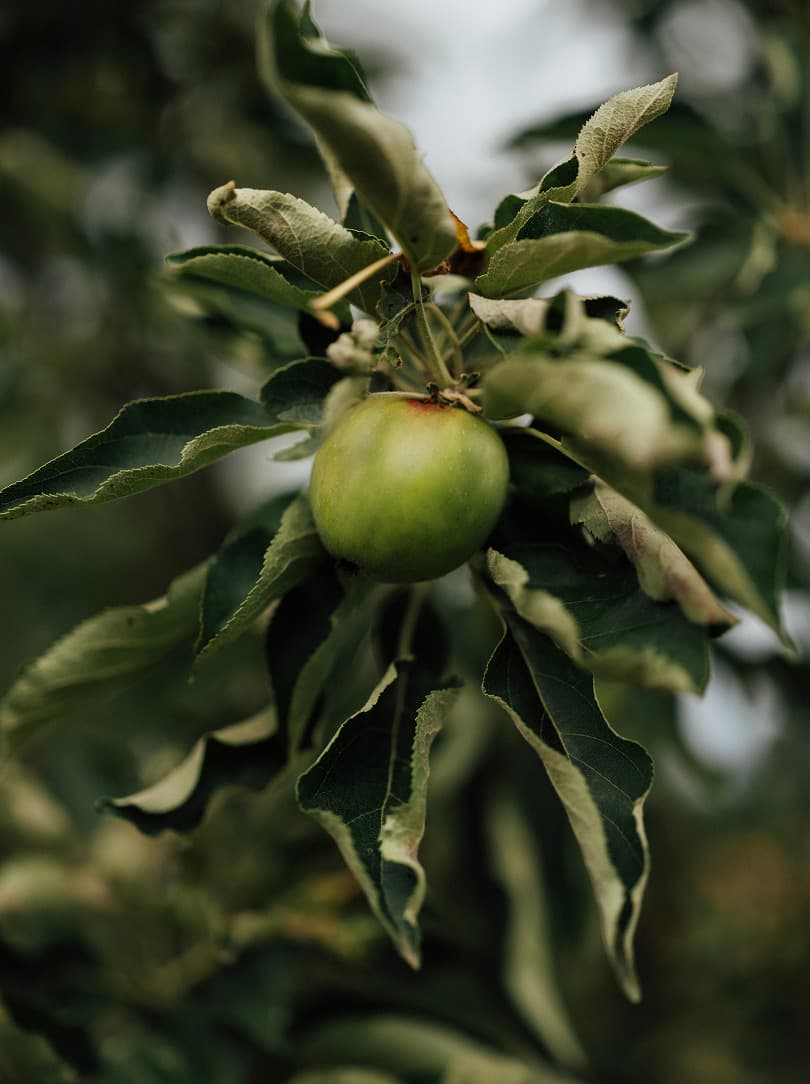
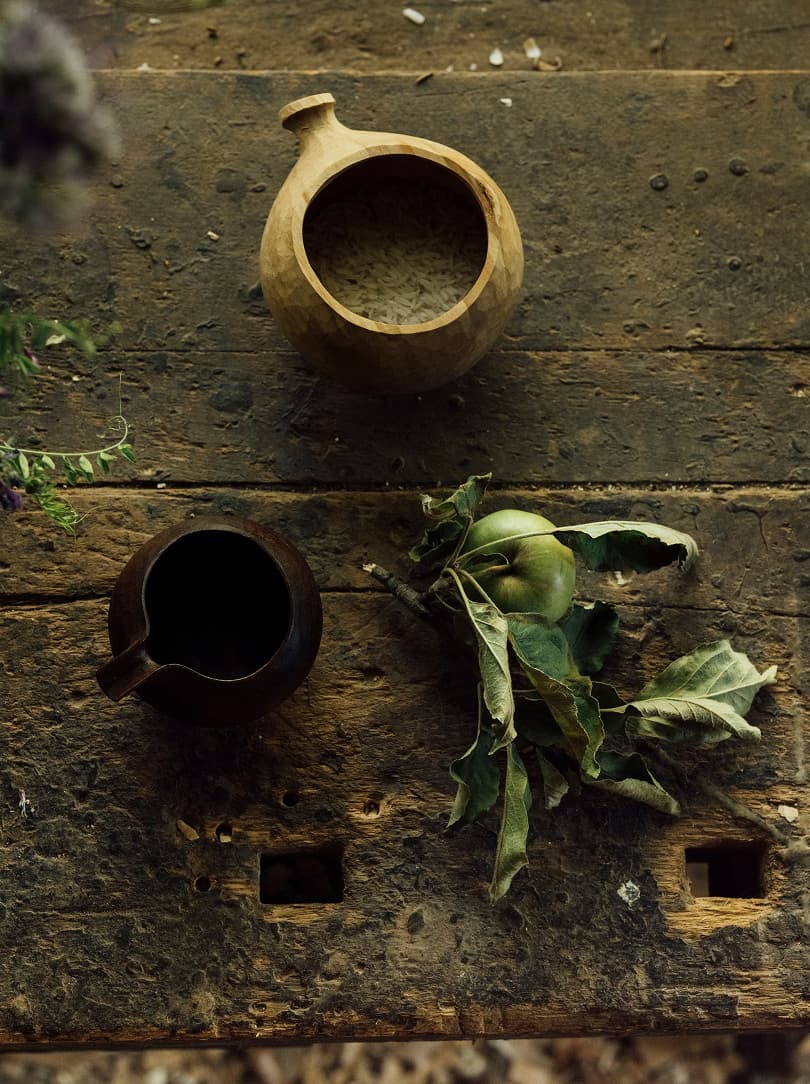
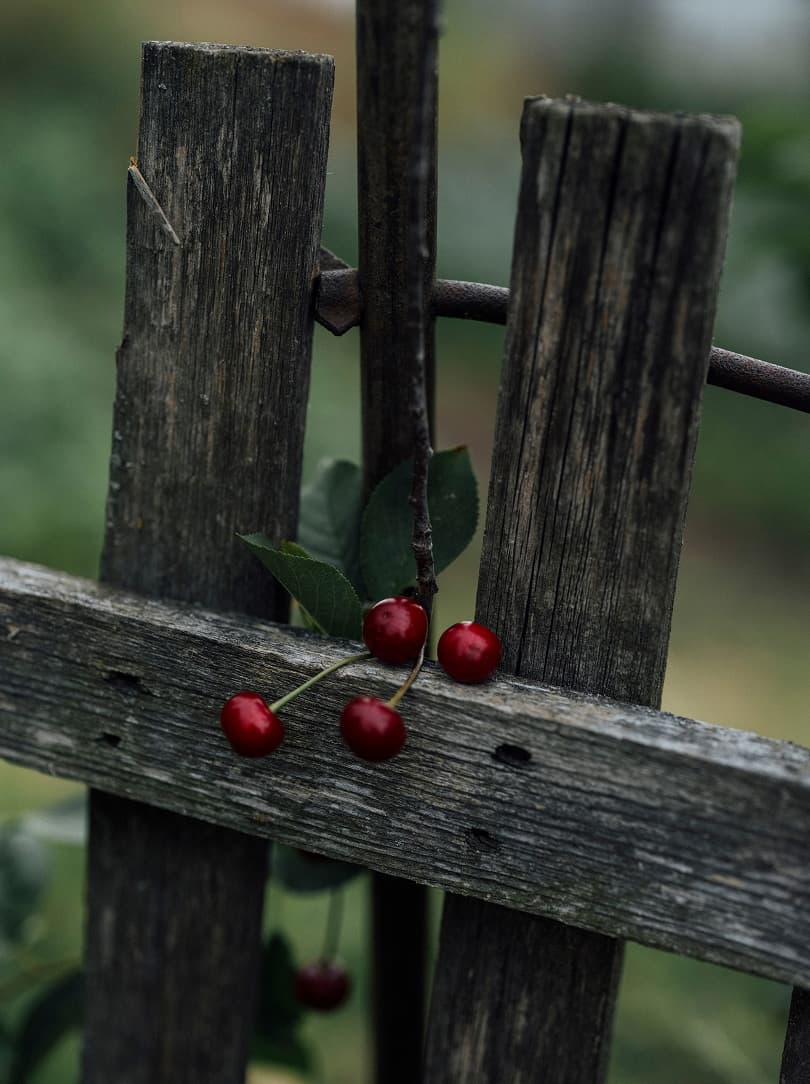
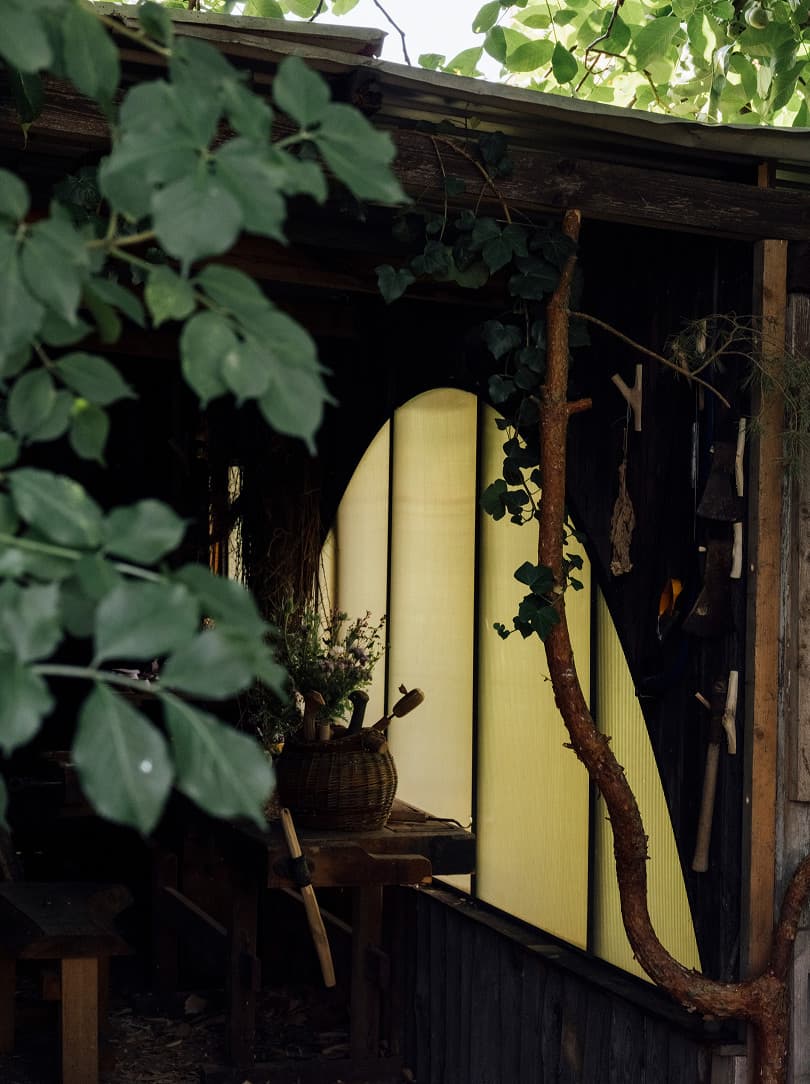
A neat little fence and wooden gate, latched with a wooden spoon, announce our arrival. Instantly commanding our attention is a sprawling, magnificent walnut tree, guarding the entrance of the open workshop and offering an abundance of shade beneath its leafy boughs. Still without shoes, Samuel leads the way across the woodchip path, surrounded by greenery, with a small firepit to our left encircled by stumps for seats.


“I only use hand tools in the process. A very minimal toolkit is required for the amount of work I do. It’s really just three tools: an axe, a hook knife and a straight carving knife. With these, I can carve pretty much anything.”
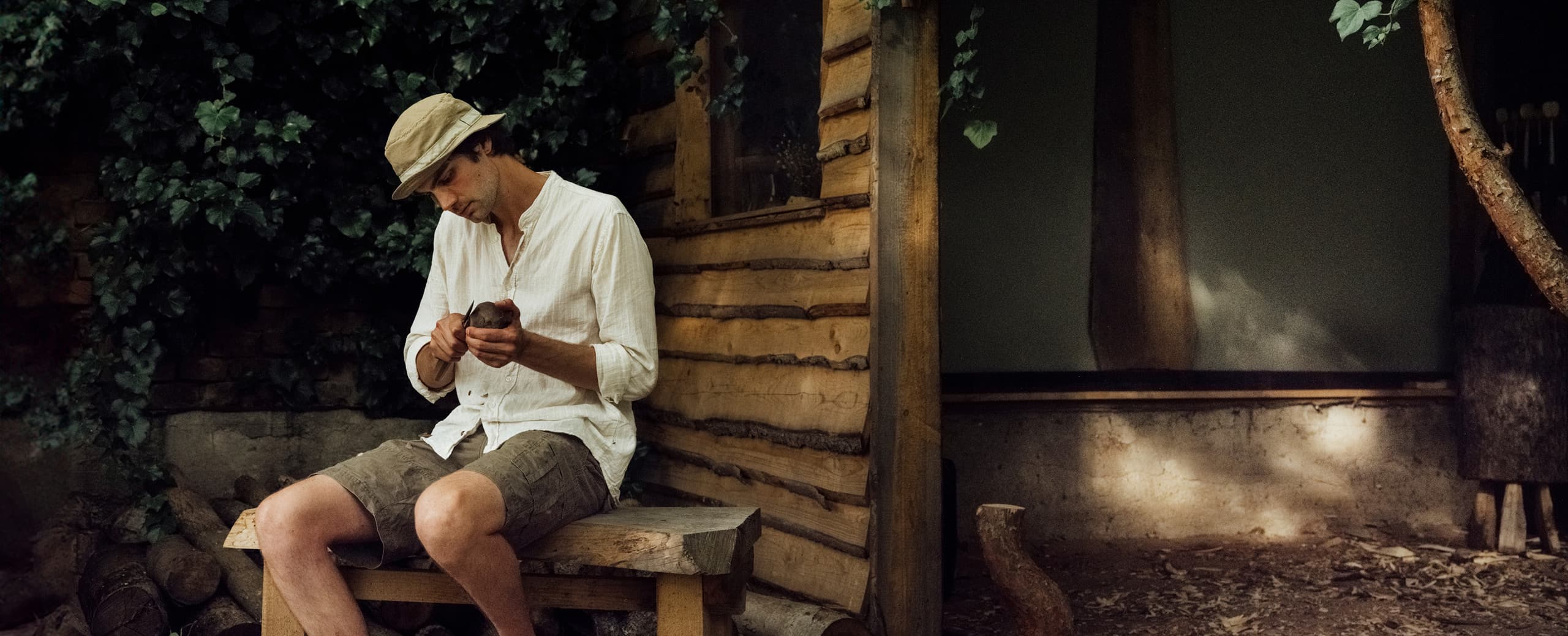
Entering the workshop feels a bit like stepping back in time. Once a house, then a barn for sheep, it’s now an open shelter that breathes with the landscape. A wide-arcing frosted window along one wall allows in filtered light, the material for which was salvaged from the old pool canopy, as Samuel tells us.
Traditional tools, an apron and a chore coat hang from wall hooks fashioned from y-shaped tree branches. A brick-tiled floor is scattered with wood shavings. There’s a log pile, a few wooden bench seats, a chopping block and a long workbench topped with a wildflower arrangement in an aluminium watering can. Placed carefully across the surface are many of Samuel’s beautifully formed creations – bulbous vessels and slender spoons that at first glance appear identical, but on closer inspection reveal subtle, hand-carved differences, each one shaped with precision. Being a green-wood carver means working only with freshly felled timber and carving by hand before the wood dries, making it easier to cut and hollow.
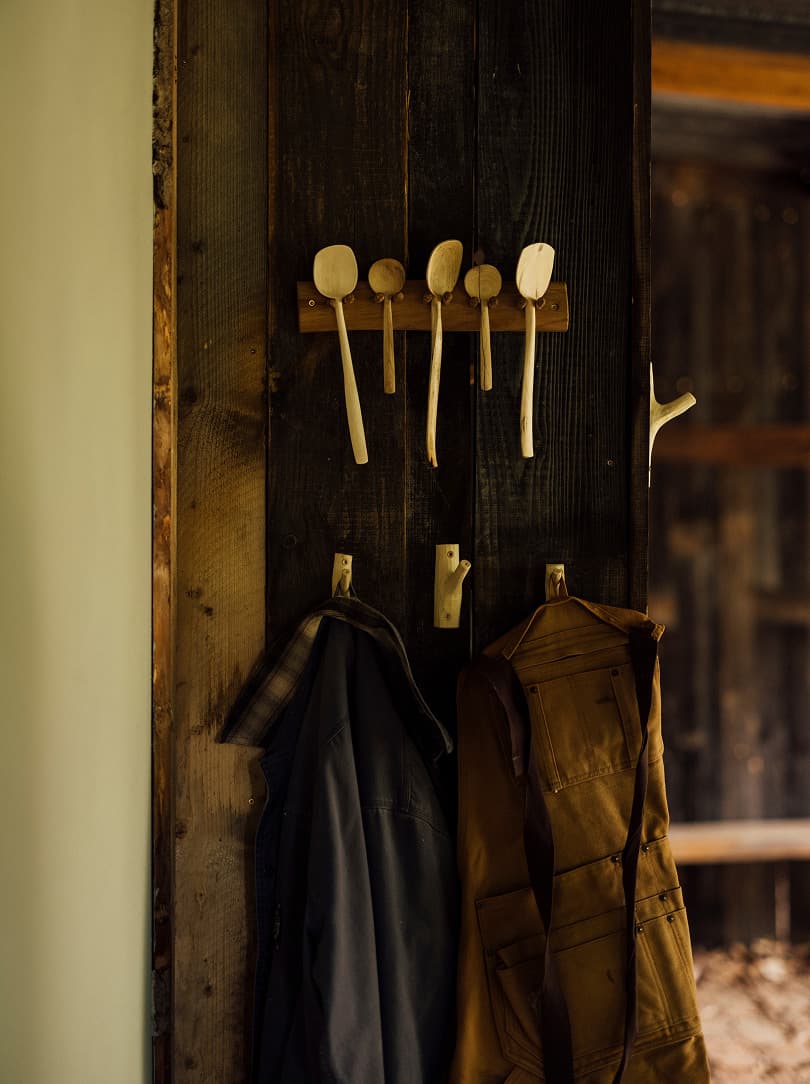
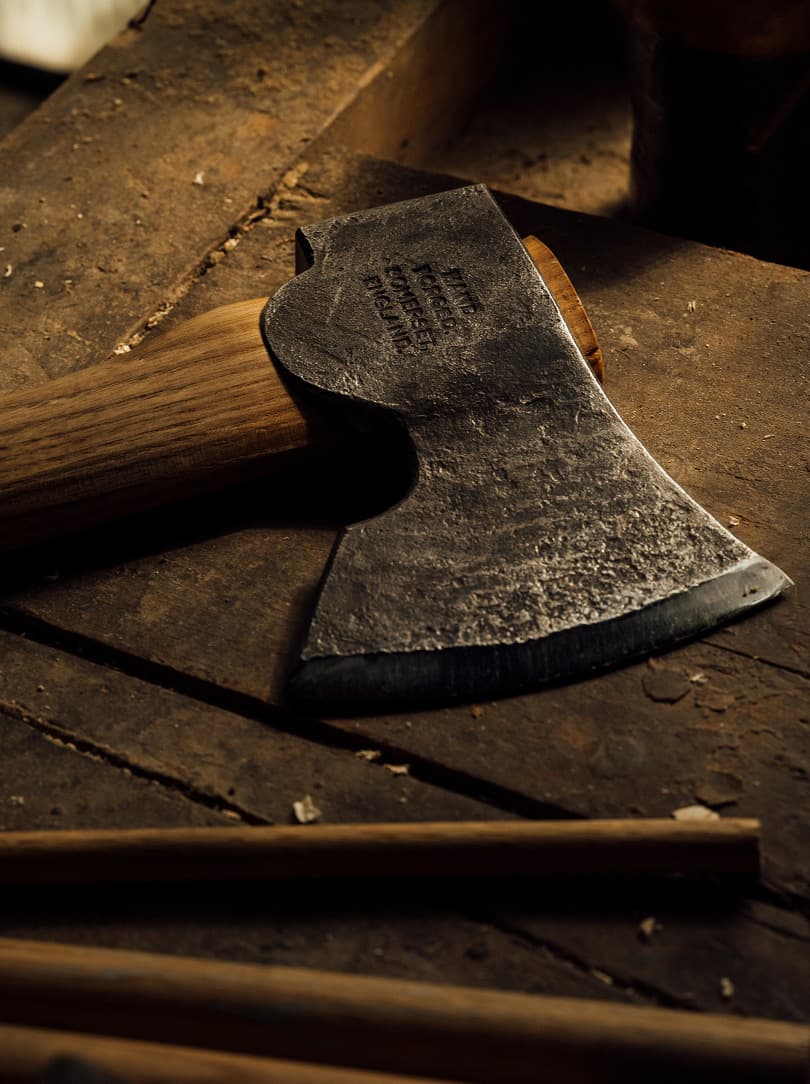
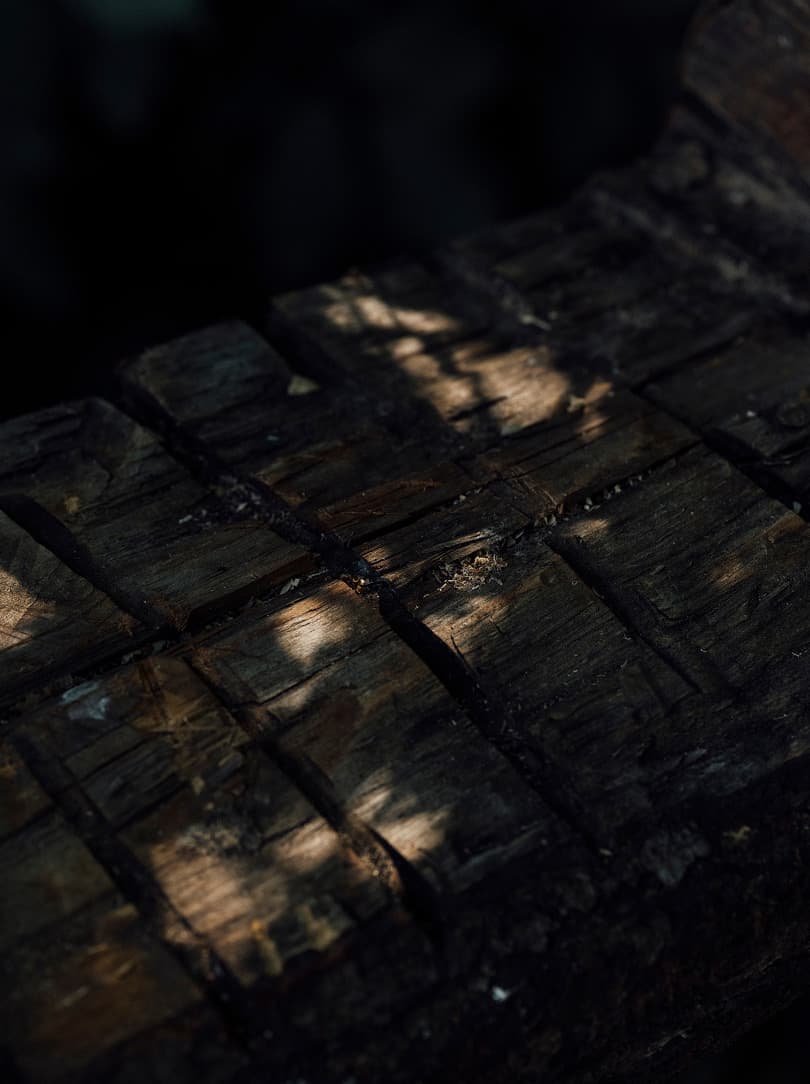
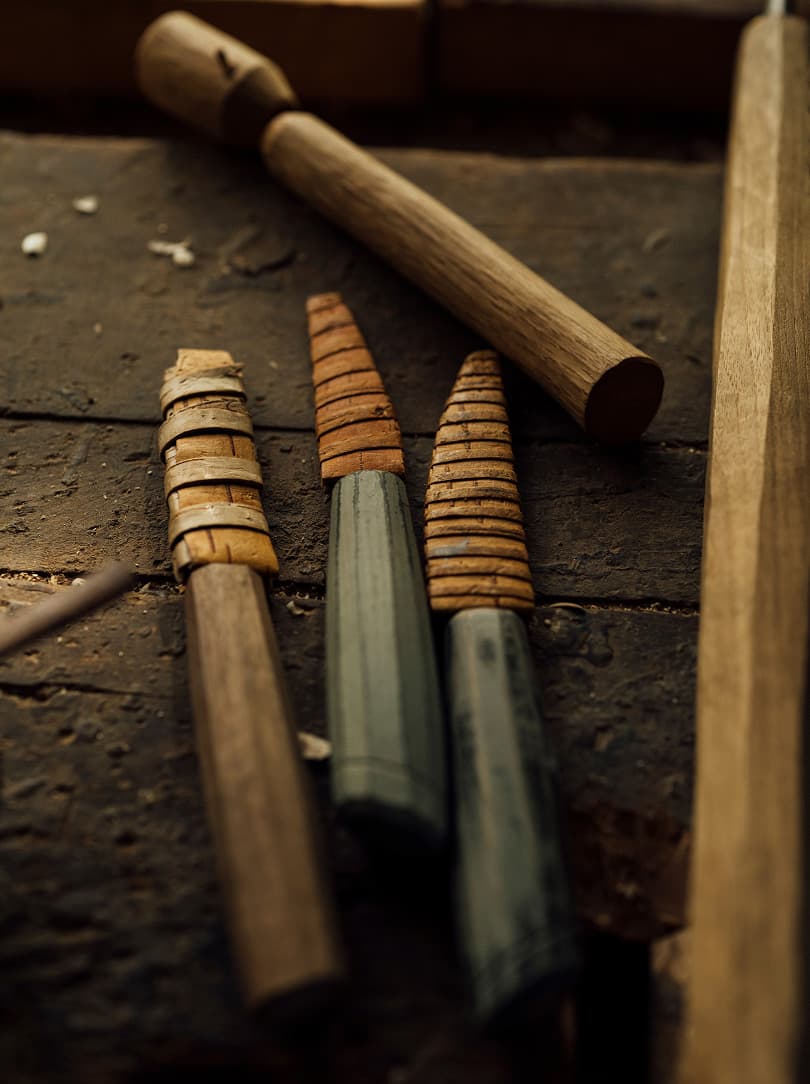
“I only use hand tools in the process,” he says. “A very minimal toolkit is required for the amount of work I do. It’s really just three tools: an axe, a hook knife and a straight carving knife. With these, I can carve pretty much anything.” Samuel describes how he likes to “stay analogue”, so that he can “really respond to the way that the wood is behaving. Using power tools, it bypasses the whole sensitivity of what it means to work with wood.”
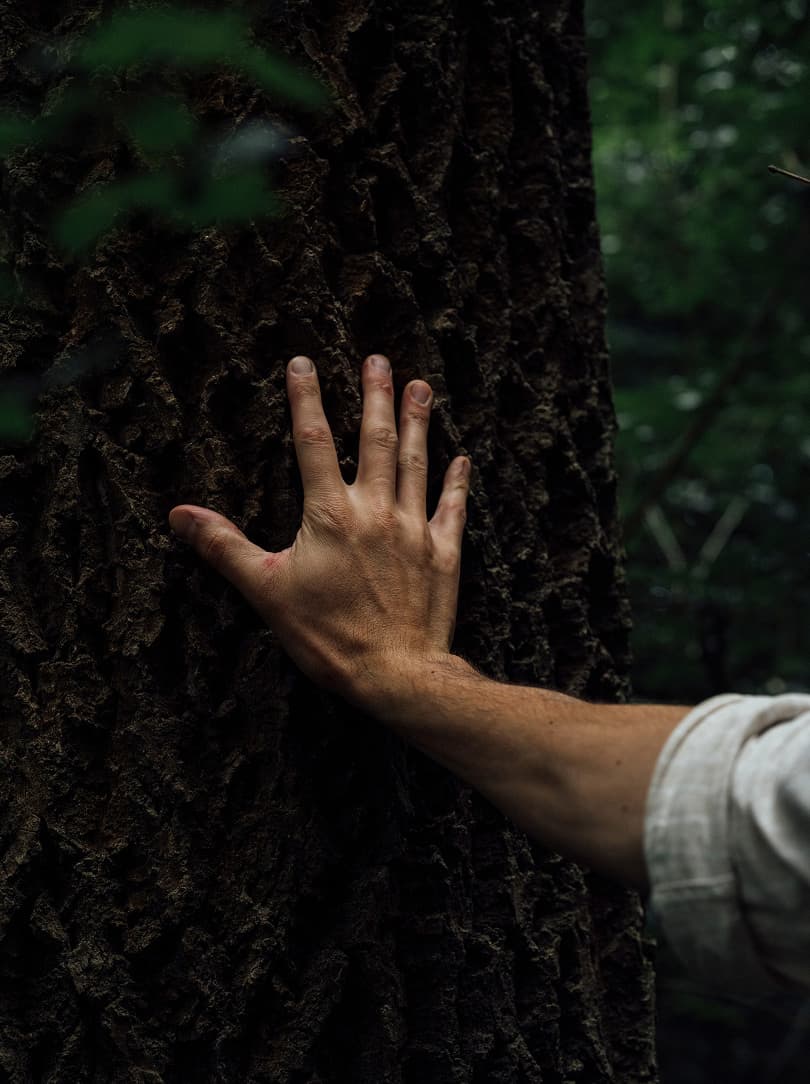
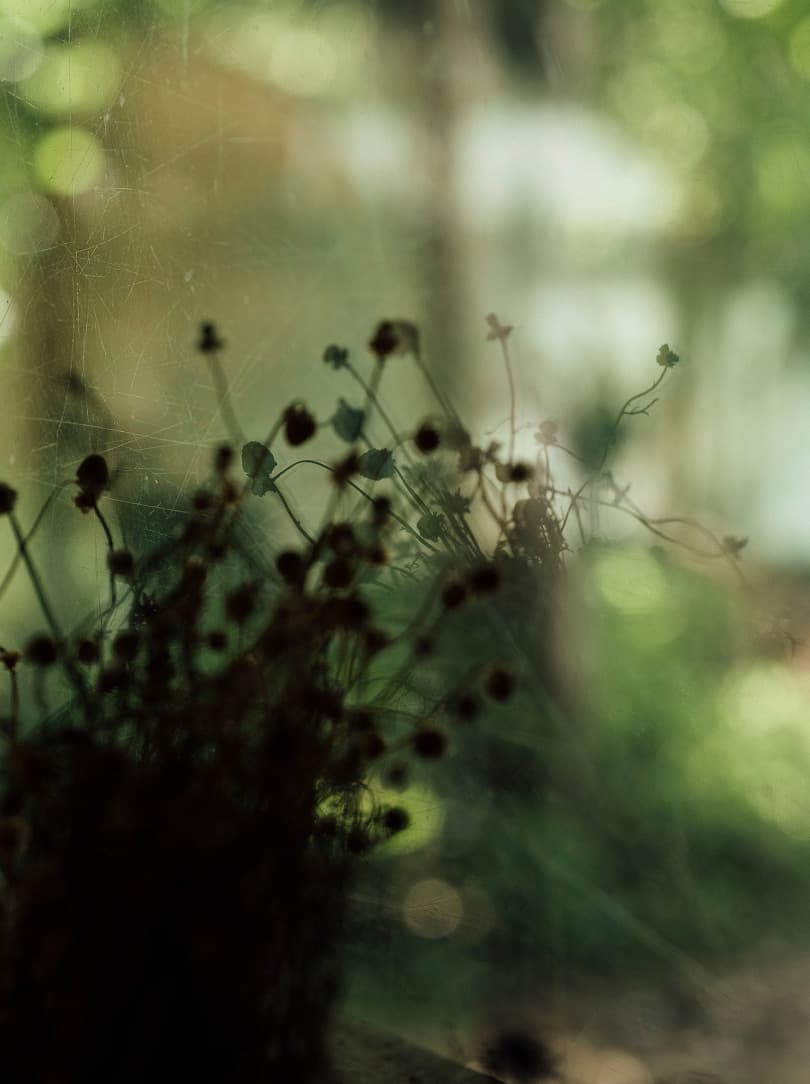

As we spend more time with Samuel that afternoon and into the bright, warm evening, we witness a lightness about him – a playful spirit that radiates the gentle, positive energy of someone who is content, who has found their place in life. But it wasn’t always an easy road. Samuel has a deep history of depression and anxiety, which stems from childhood. He grew up in Devon, a county known for its natural beauty on the south coast of England, as the eldest boy of 11 siblings. “Childhood was quite tough for me,” he says quietly. “A lot of moving around. Not really homes, just places. I spent most of it outdoors, climbing trees, being among the forests, and watching the land change with the seasons through agricultural practices.”
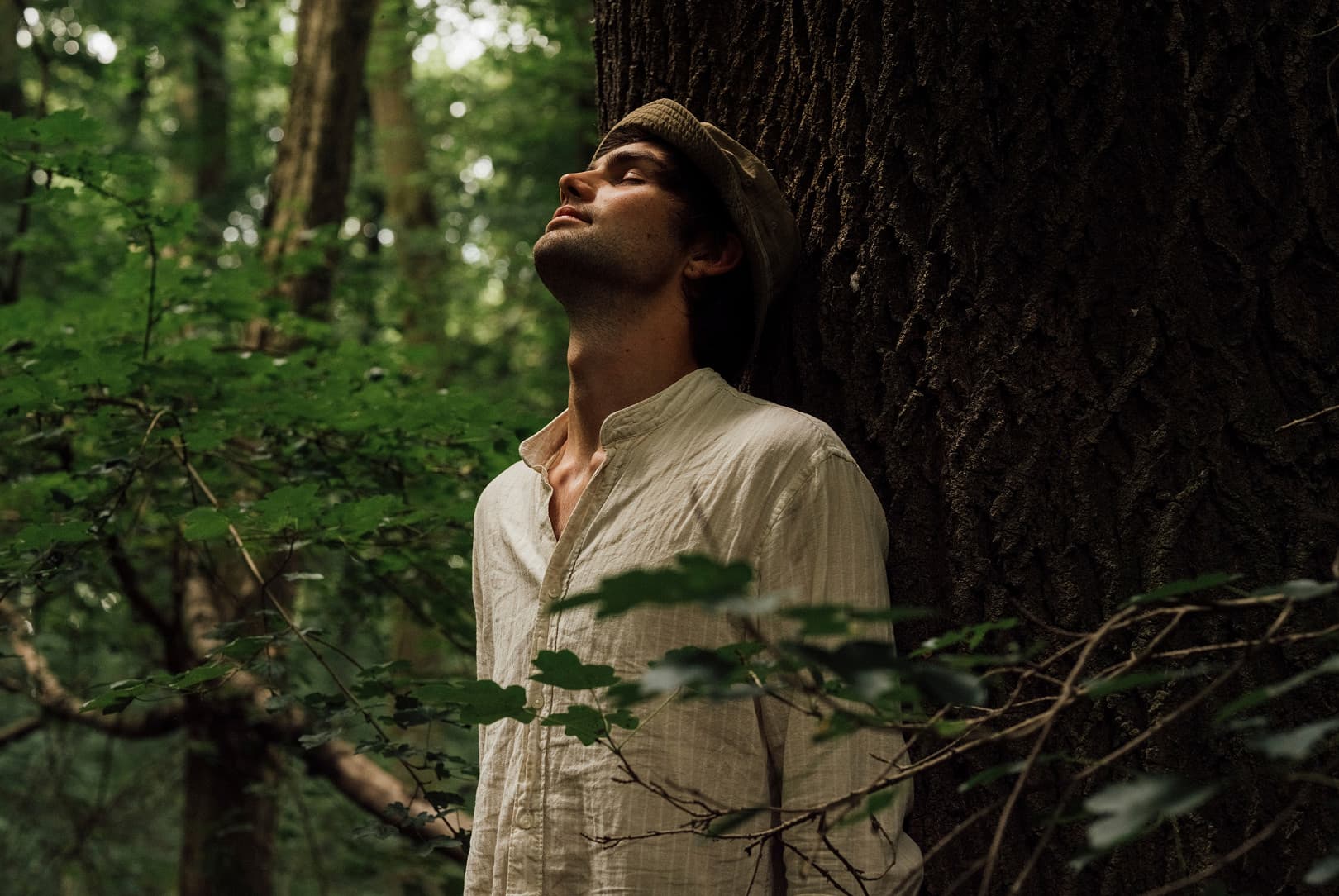
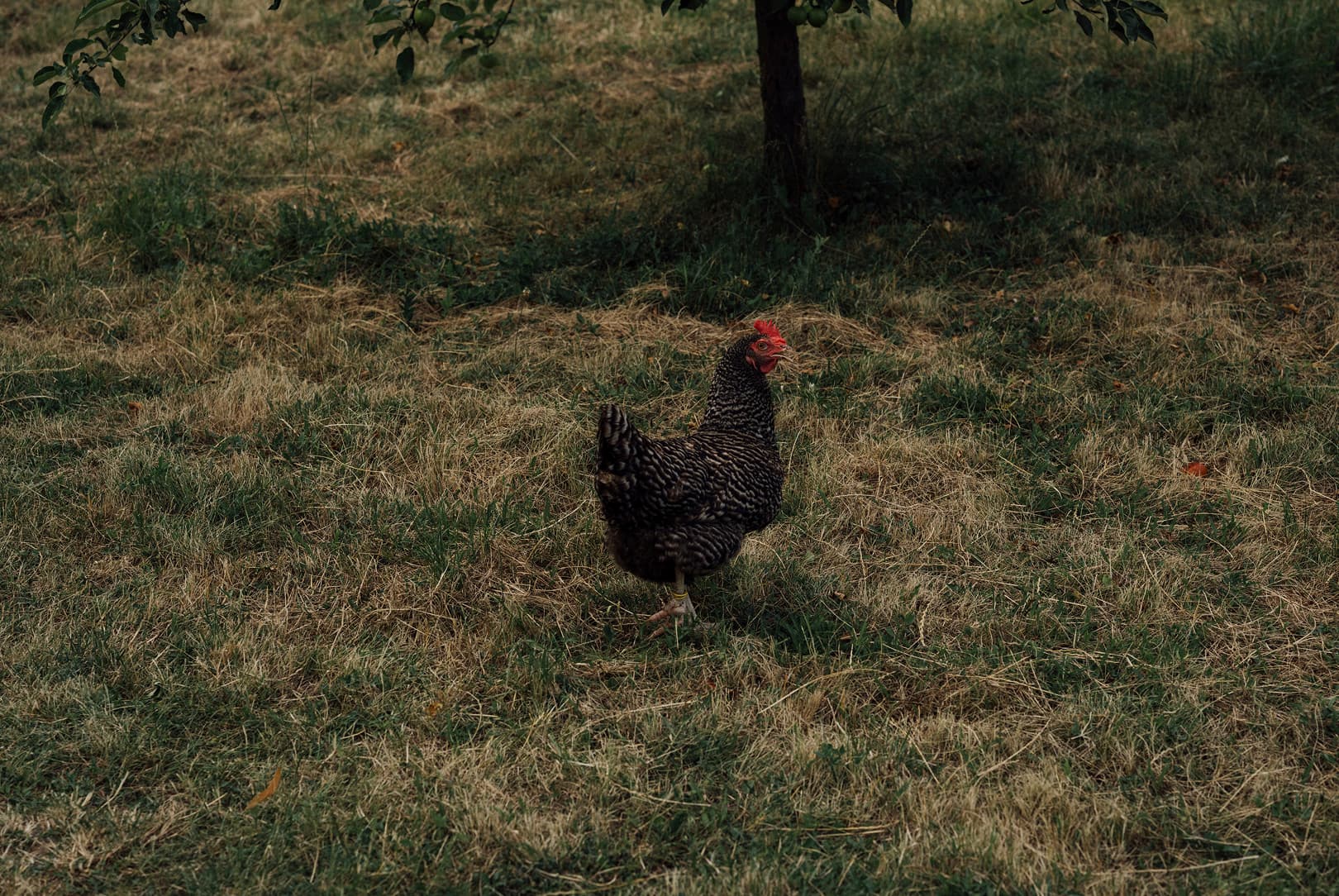
Nature became both his teacher and his sanctuary. Samuel speaks of Devon with reverence – as a place where rugged coastlines met manicured farmland. “There’s a kind of quiet drama to the English countryside,” he says. “One minute you’re in a soft, green field and the next you’re facing wind-beaten cliffs. That contrast stayed with me.” One of his most vivid memories and inspirations is of his grandfather tending to his crop of vegetables on his tiny plot of land. “Every week I’d visit, just to see how the runner beans had climbed or the pumpkins had fattened. Watching him care for that plot – so gently, with so much patience – it rooted something in me.”
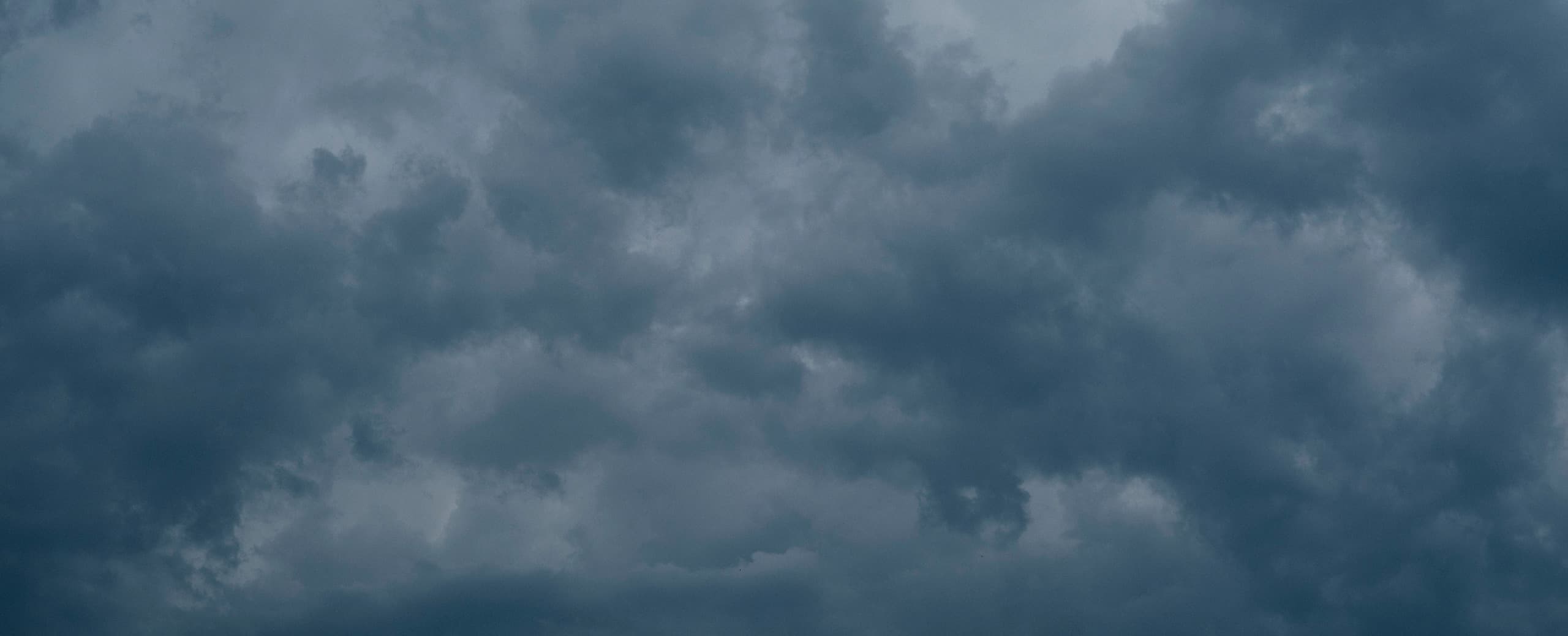
“Modelling boosted my confidence a bit… but it soon wore off for me. The whole world of fashion – it’s loud, fast-paced, full of rejection and competitiveness. I always felt like I wanted to be known for what I made, not how I looked.”
From rural Devon, Samuel moved to London to study illustration and animation. He fell into fashion modelling when he was scouted at 19 and, signed to agencies in London and Milan, walked the runways of Europe for a few years. “Modelling boosted my confidence a bit,” he admits, “and allowed me to travel. For a while, I was in the thick of it and it was interesting to be a part of, but it soon wore off for me. The whole world of fashion – it’s loud, fast-paced, full of rejection and competitiveness. I always felt like I wanted to be known for what I made, not how I looked.”
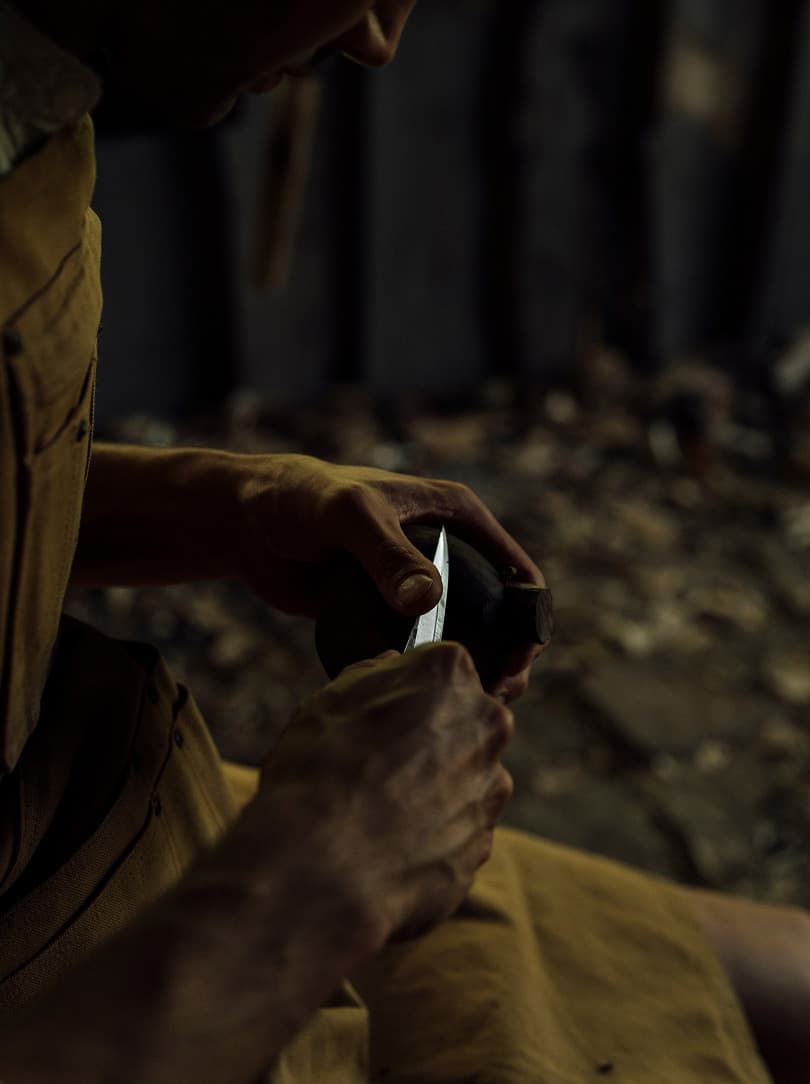
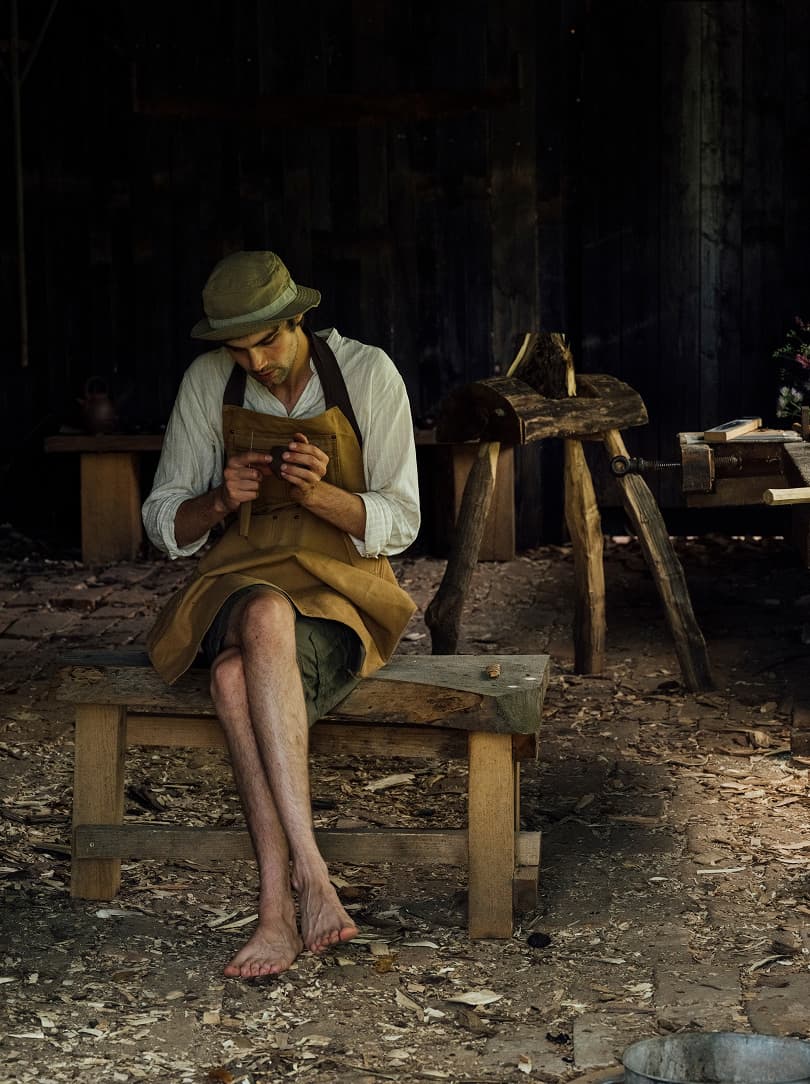
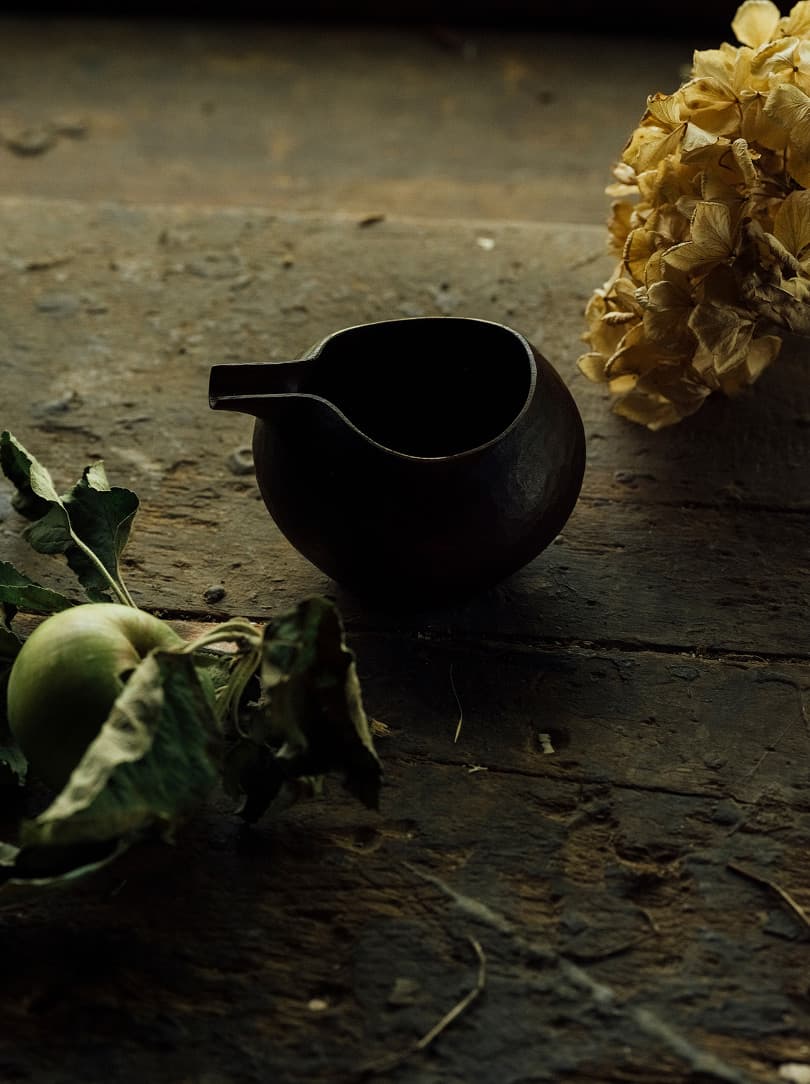
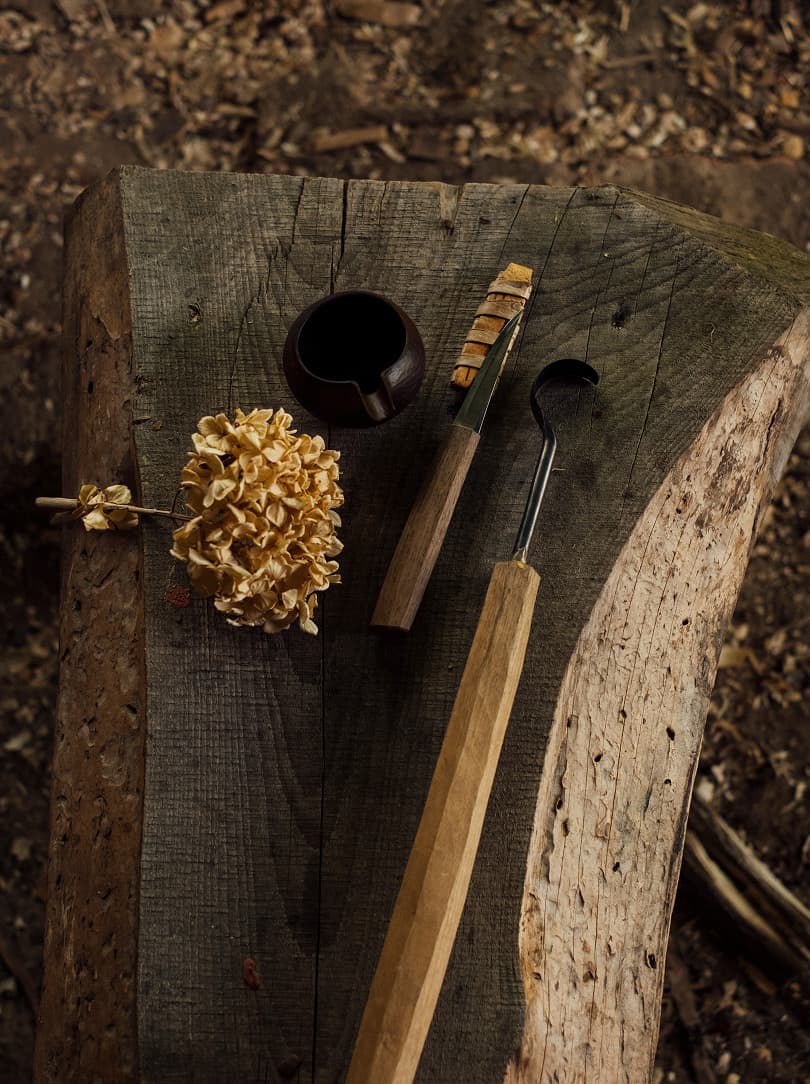
The slower pace he craved revealed itself quite by chance when a friend offered him a stay on a narrowboat on Regent’s Canal. He completely fell in love with living on the water, which, for him, created a sense of peace within the huge melting pot of a city. Eventually Samuel got his own boat and became part of an “incredible, vibrant community” who shared food, skills and music – some of whom he still counts as best friends. The craft he had already begun to teach himself at the age of 20, when he was serendipitously given a beginners’ book on things you could do with a knife, began to evolve into a method of healing.
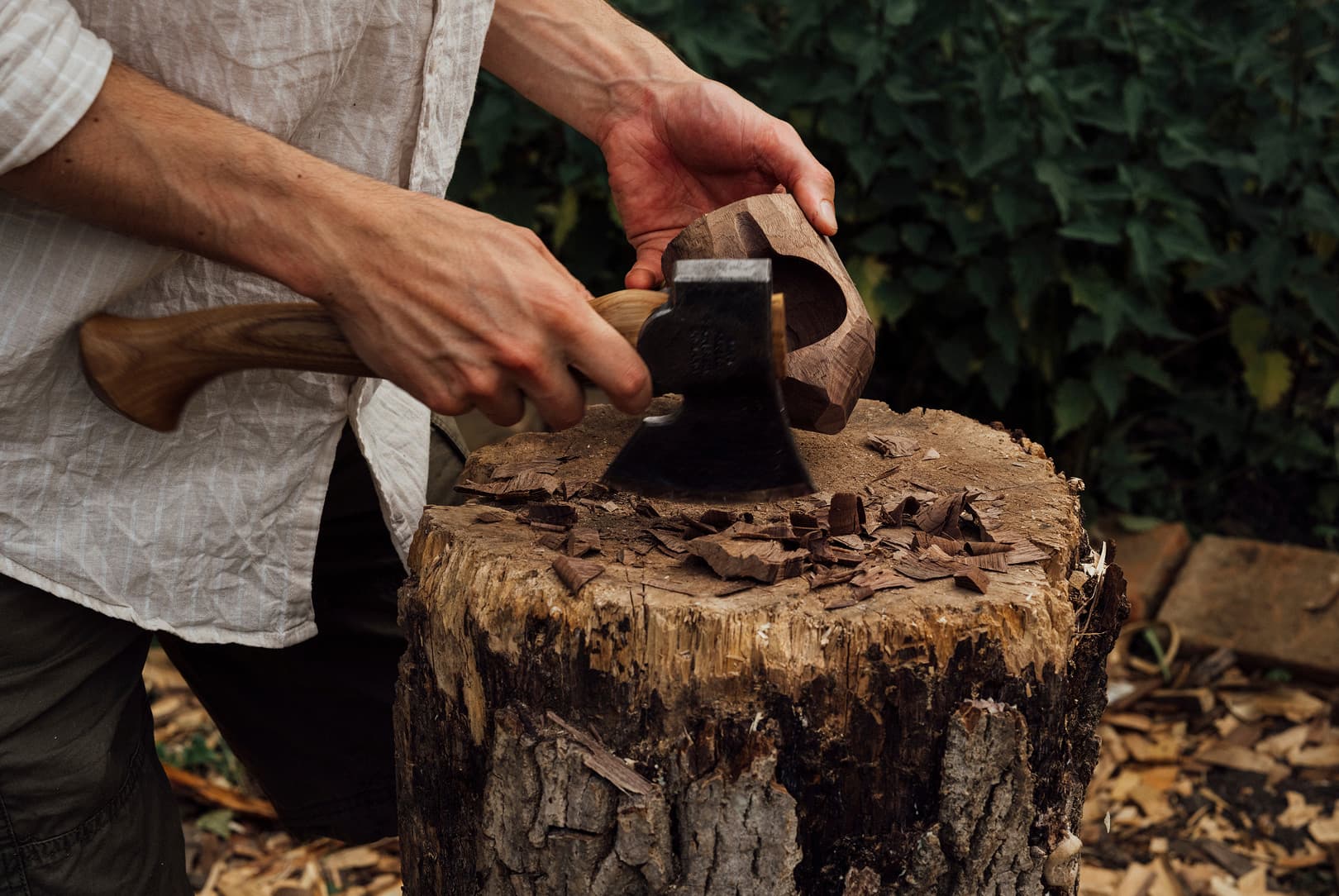
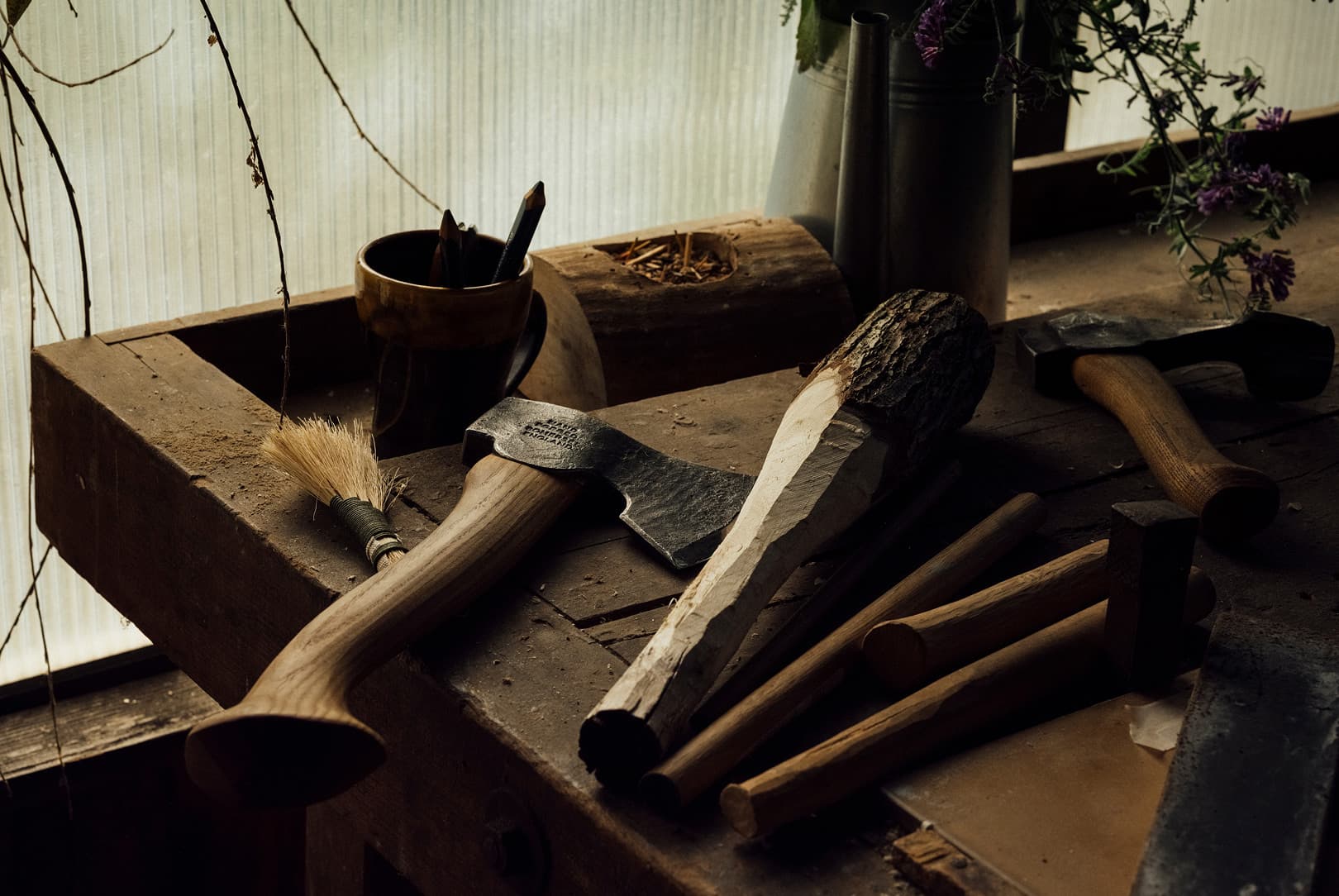
“Wood carving was a way for me to be able to channel negative energy and turn it into an outcome, a tangible product that exists,” says Samuel. “I felt like I was able to not only hold my feelings, but also release them or burn them.” Craft, he explains further, was an opportunity to give power back to his younger self; the gesture of being given a pocket knife to carve something. “When I started, I was confronting trauma, in a way. It was very healing.” A decade later, Samuel is one of a growing number of craftspeople reviving green-wood carving. “Now, I see carving as a form of meditation – a way to refocus, to practise mindfulness and to fully immerse myself in something tactile.”
Kateřina suddenly arrives at the workshop bearing a tray of smooth wooden cups and a glass jug of cold water bobbing with freshy picked raspberries. As she sets it down on a bench seat, a slightly distorted voice crackles through some loudspeakers, followed by music for a few minutes. Kateřina explains that these are local community announcements – updates like the doctor being off sick or the pharmacy closing early – and that it’s been this way since she was a child.
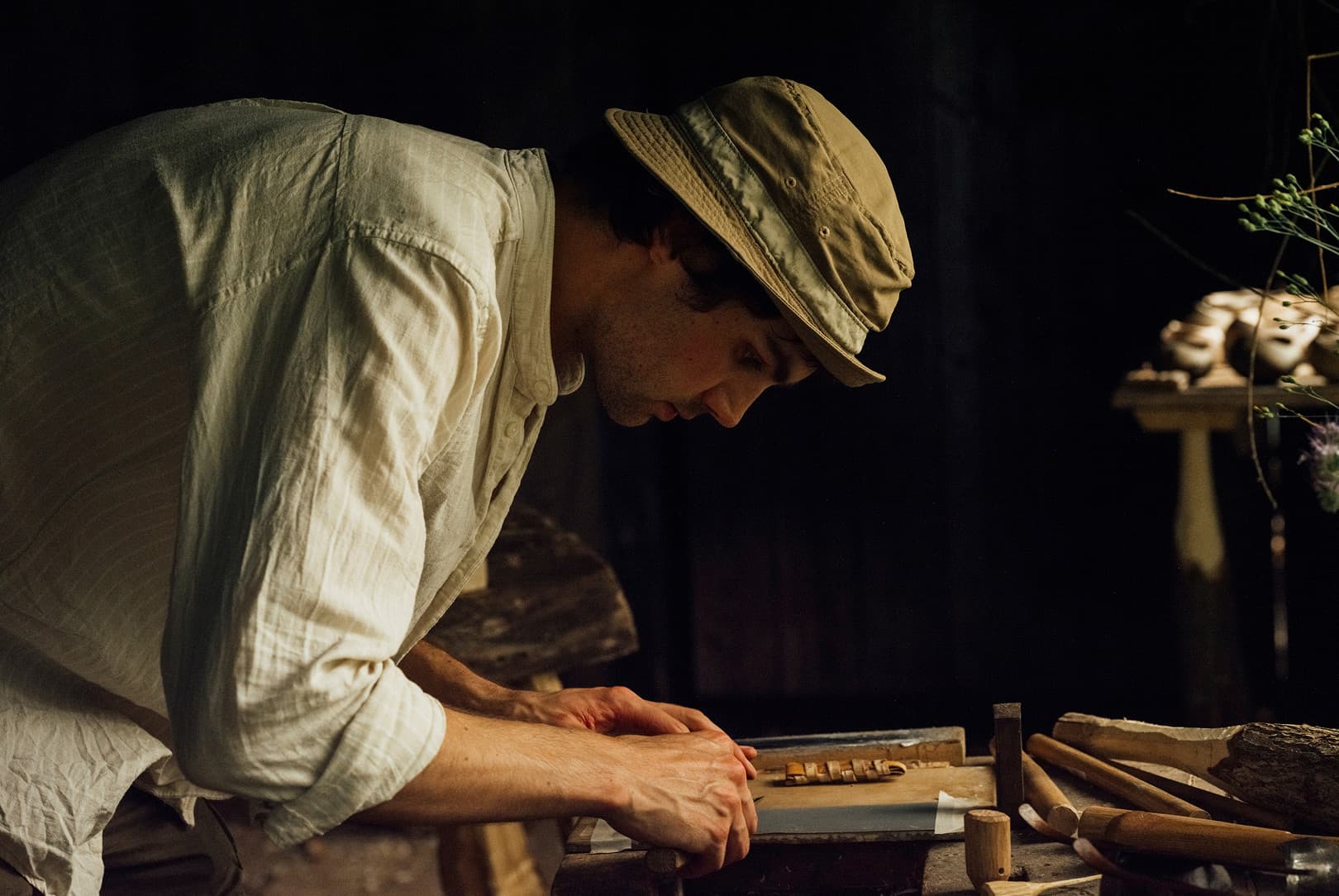
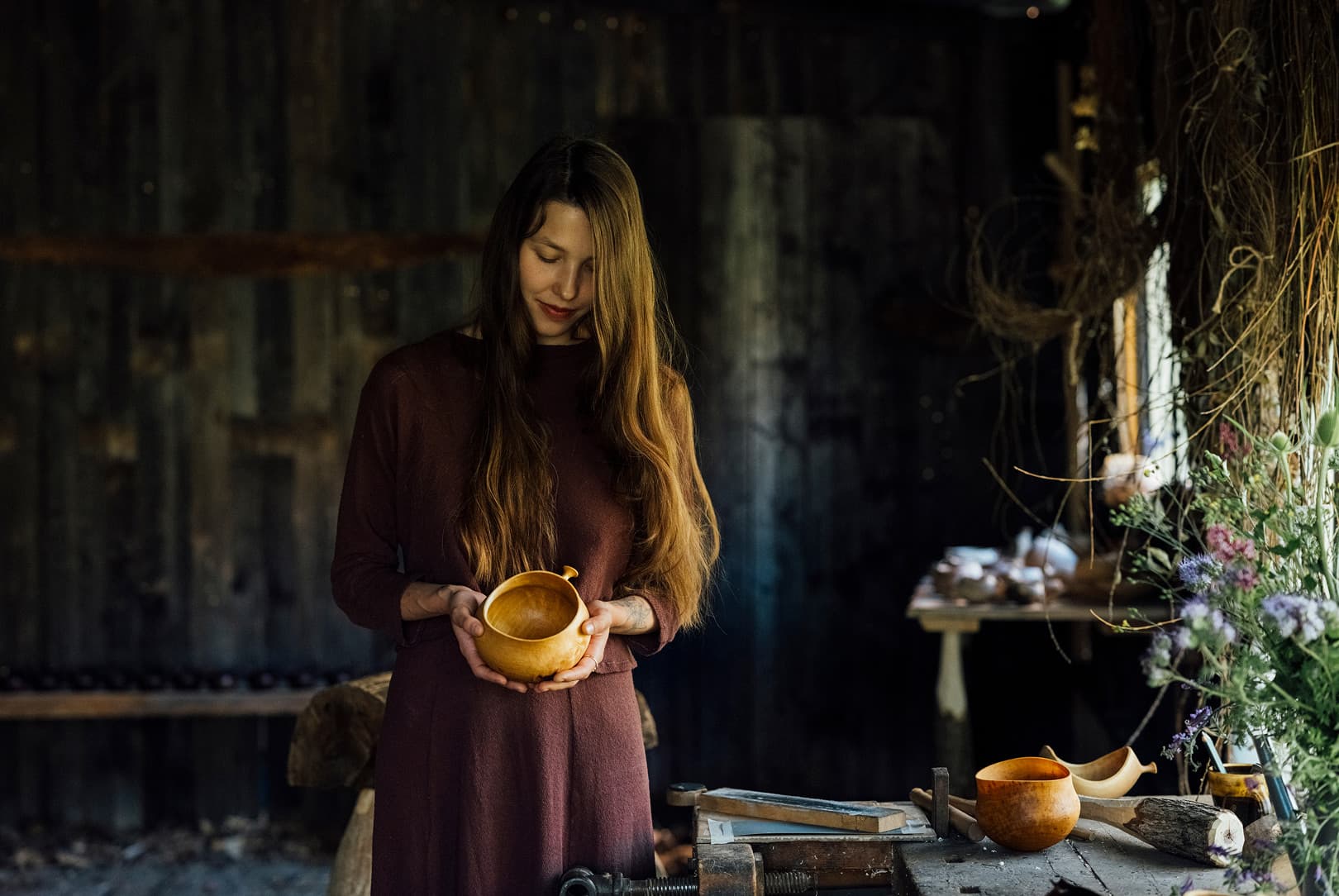
Smiling and open, she also speaks with a soft, precise English accent, and tells us it’s because she moved to London for school at the age of 16. She and Samuel first met during his modelling days, when she was working at a magazine. They became friends, then a couple, eventually living together on the canals.
Meanwhile, we have been observing Samuel work his magic. There’s a quiet rhythm to it – almost a choreography. His feet are planted firmly, his posture grounded, as he swings the axe in clean, deliberate blows. Chips fly in small bursts. The motion is purposeful but not rushed. At times he uses the axe while holding the wood in his other hand, landing alarmingly close to his fingers. “The axe is quite stoic,” he says smiling. “What I really love about it is that although it’s quite a burly tool, it can be used as delicately as an ink brush. It depends how I’m feeling.”
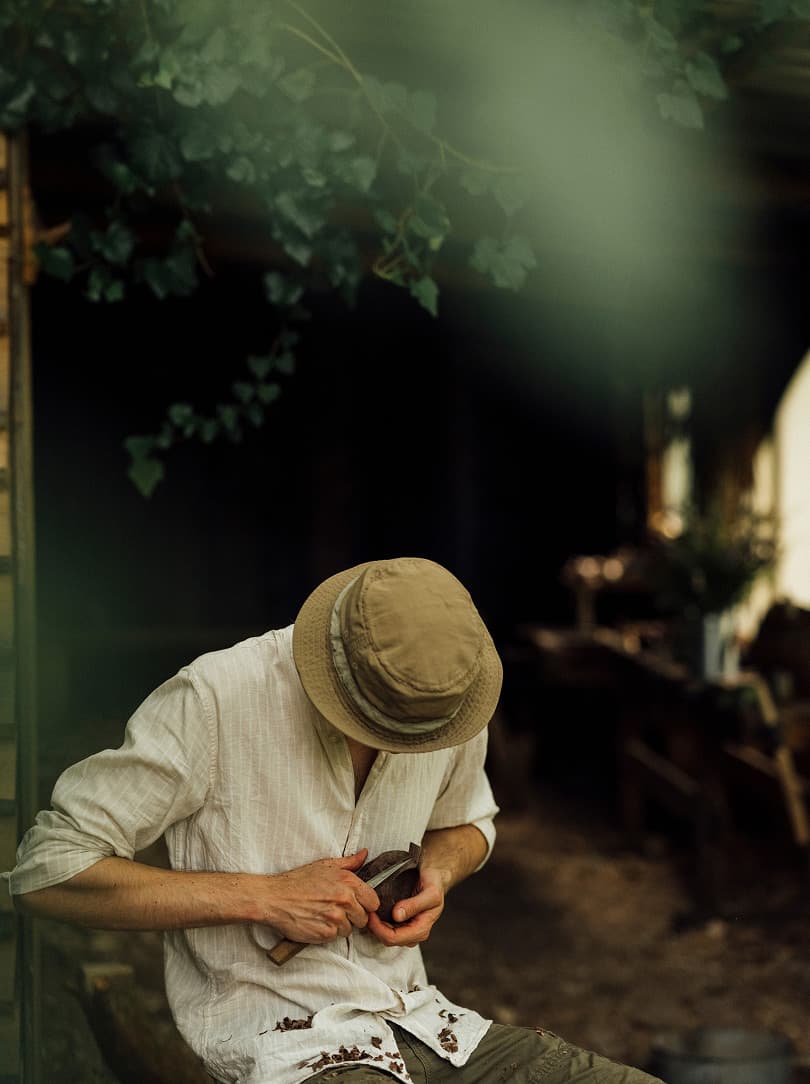
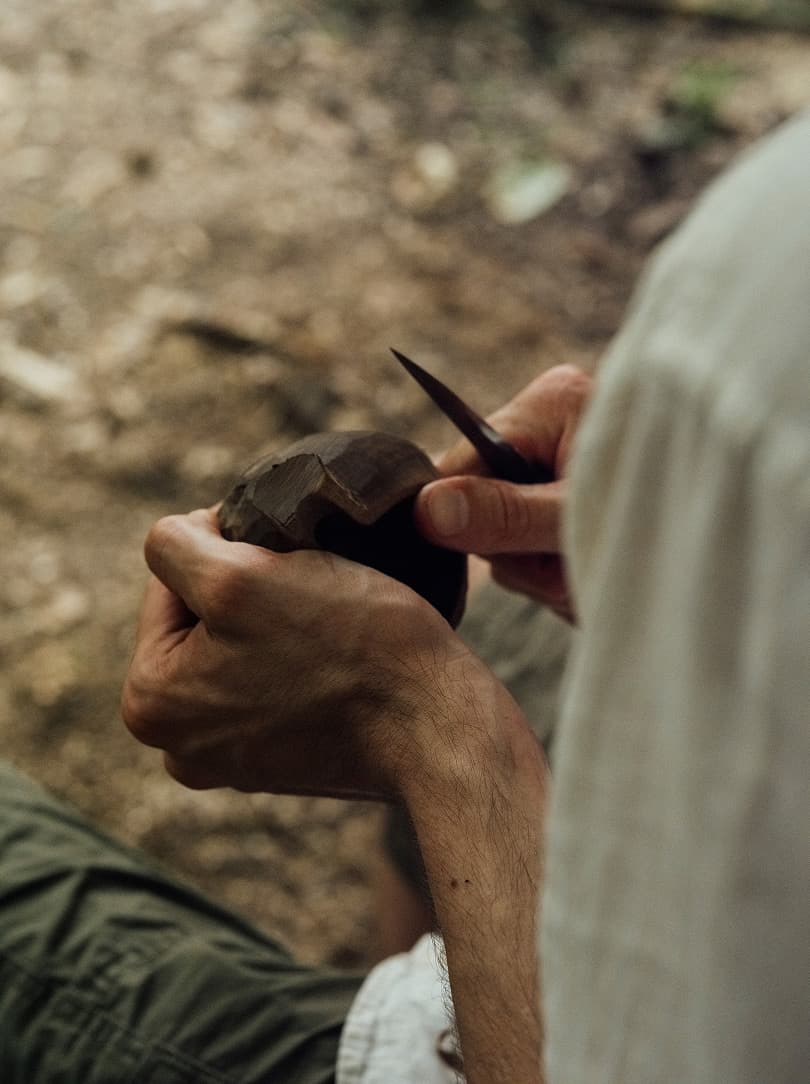
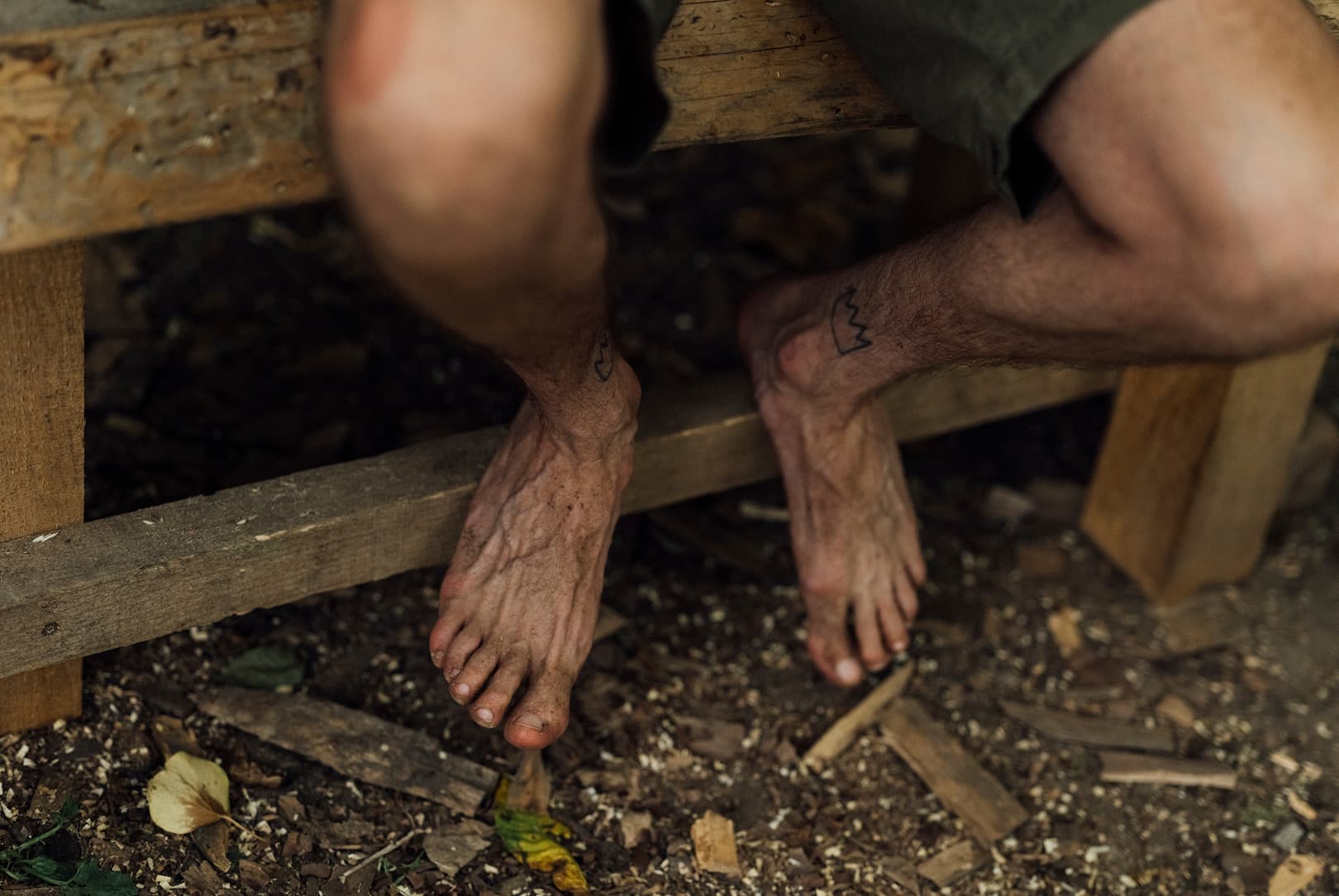
“When I started, I was confronting trauma, in a way. It was very healing. Now, I see carving as a form of meditation – a way to refocus, to practise mindfulness and to fully immerse myself in something tactile.”
He pauses and adjusts the piece of walnut wood clamped between two blocks, then lifts a long-handled hollowing tool with a kind of metal scoop on the end. His stance changes. He pivots from the hips, body twisting slightly, arms drawing wide arcs like wind through branches. “This part’s more fluid,” he says as he moves with grace. “More like a dance. I’m hollowing the form with the whole of me – not just my hands. That motion, that sweeping motion, it’s where I feel most free. I think with my body when I carve. It’s not logic. It’s something much older, more intuitive.” He describes how he loves releasing energy through this dance. “And that’s where I feel like it can also relate to other practices like meditation or ancestral practices like tai chi or yoga.”

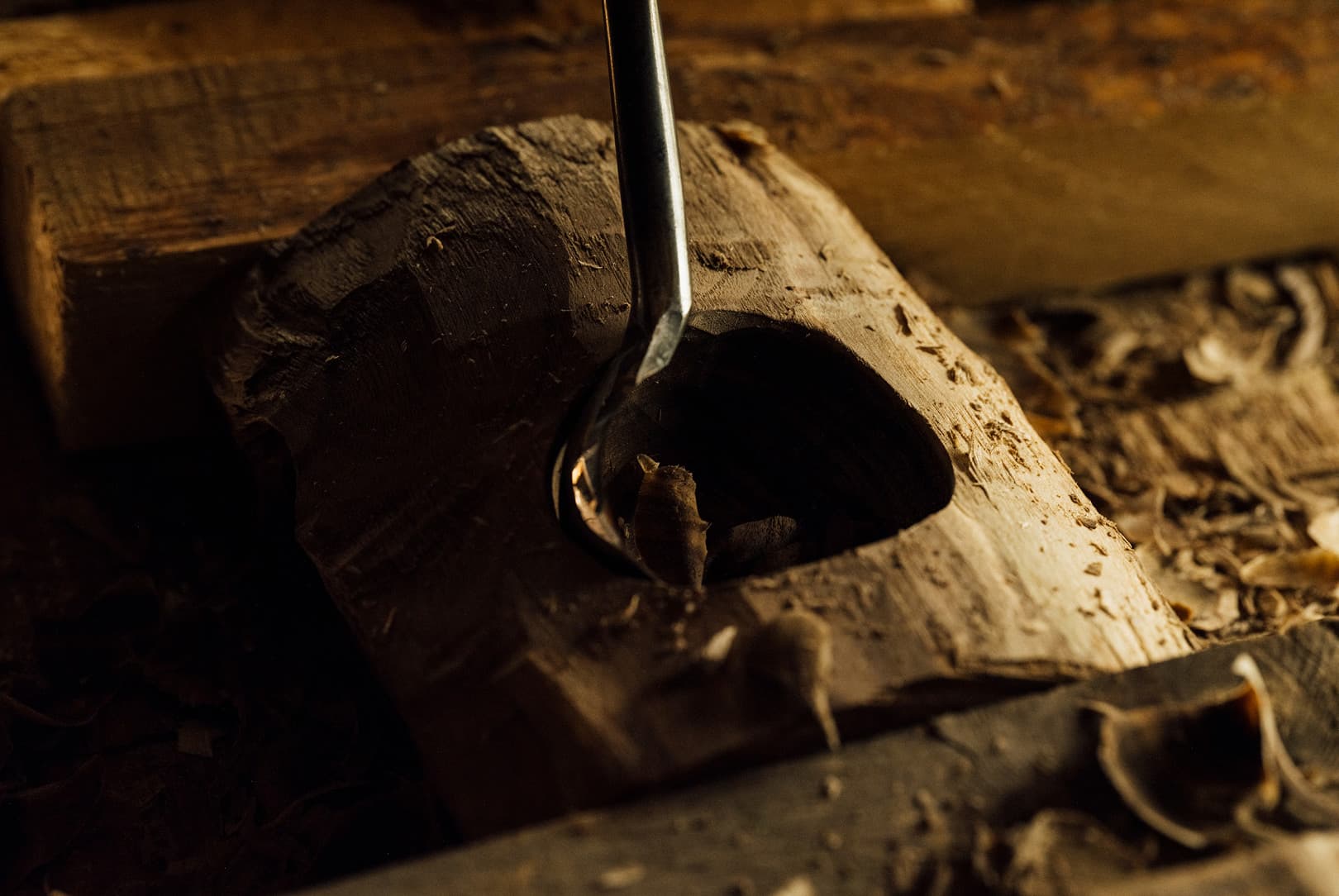
The wood begins to yield, its grain gradually unveiling the form of a rounded vessel. Samuel shifts again, this time settling onto a low bench in the dappled shade outside his workshop, drawing a knife with a blade honed to a muted sheen. Now, the energy shifts entirely. The sounds dull to a repetitive scraping. He carves slowly, delicately, eyes narrowed with calm focus. Shavings curl away from the blade in fine spirals, falling onto his lap and his feet. “This is when I get lost,” he says softly, without looking up. “I could be in a burning house and still feel like I’m in an oasis.”

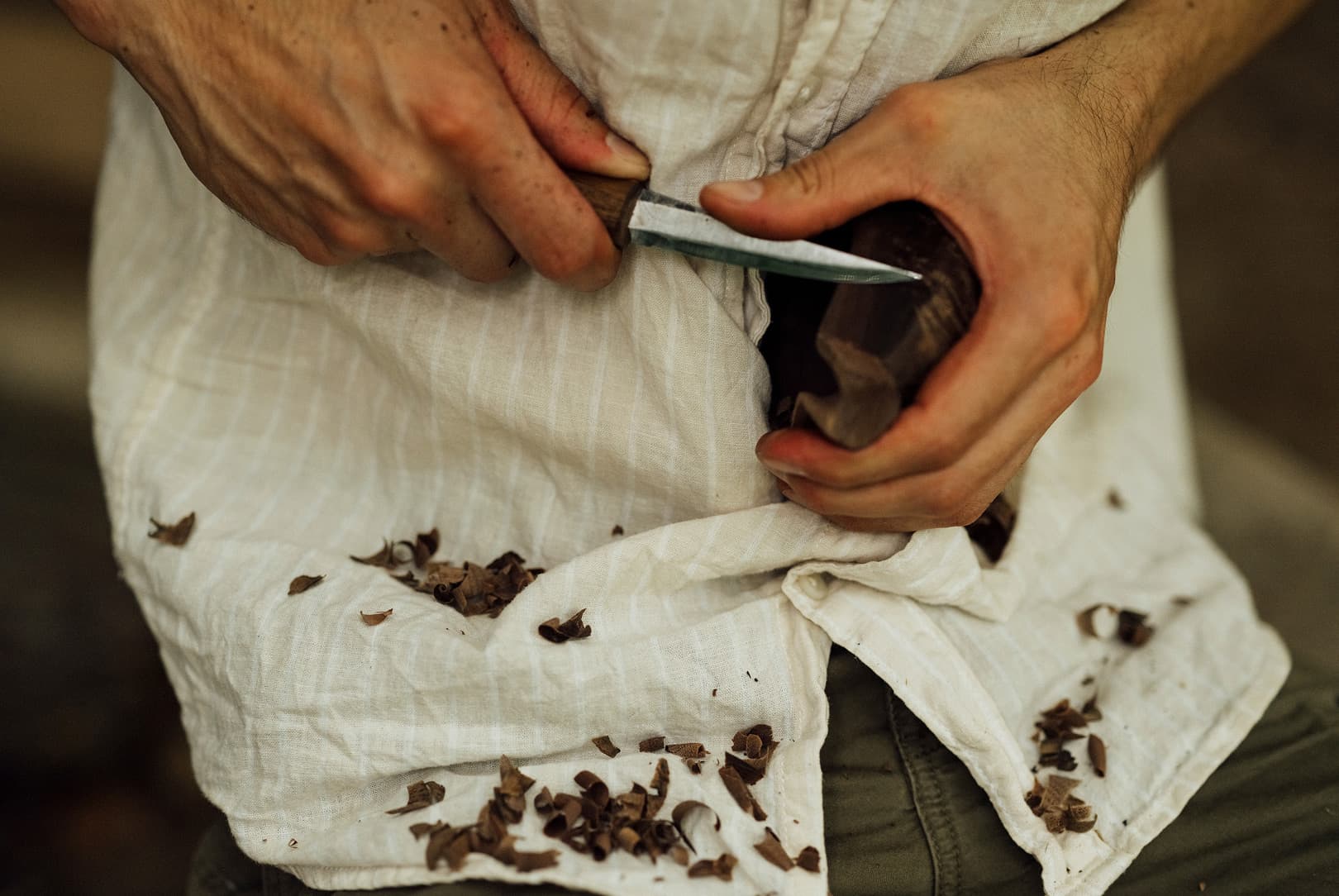
For Samuel, the tools are emotional instruments. “If I’m feeling angry or heavy, I’ll start with the axe. It helps release it. But if I’m feeling light or open, I go straight to hollowing. It’s more like joy, like dancing. Each tool holds a different kind of energy.” He tends to carve not from a plan but from feeling – responding to the curve of the grain, the weight of the air, the mood of the morning. And with that, the blade continues its quiet work, shaping something old into something new, one patient stroke at a time. He works alone and through the seasons, at one with the elements in his open shelter. “I listen to bird song instead of music. I feel the temperature. My work changes with the weather. When I carve, I feel like I’m folding into the moment. Like time disappears. It’s like holding a long, slow breath – and nothing exists but the blade and the wood.”
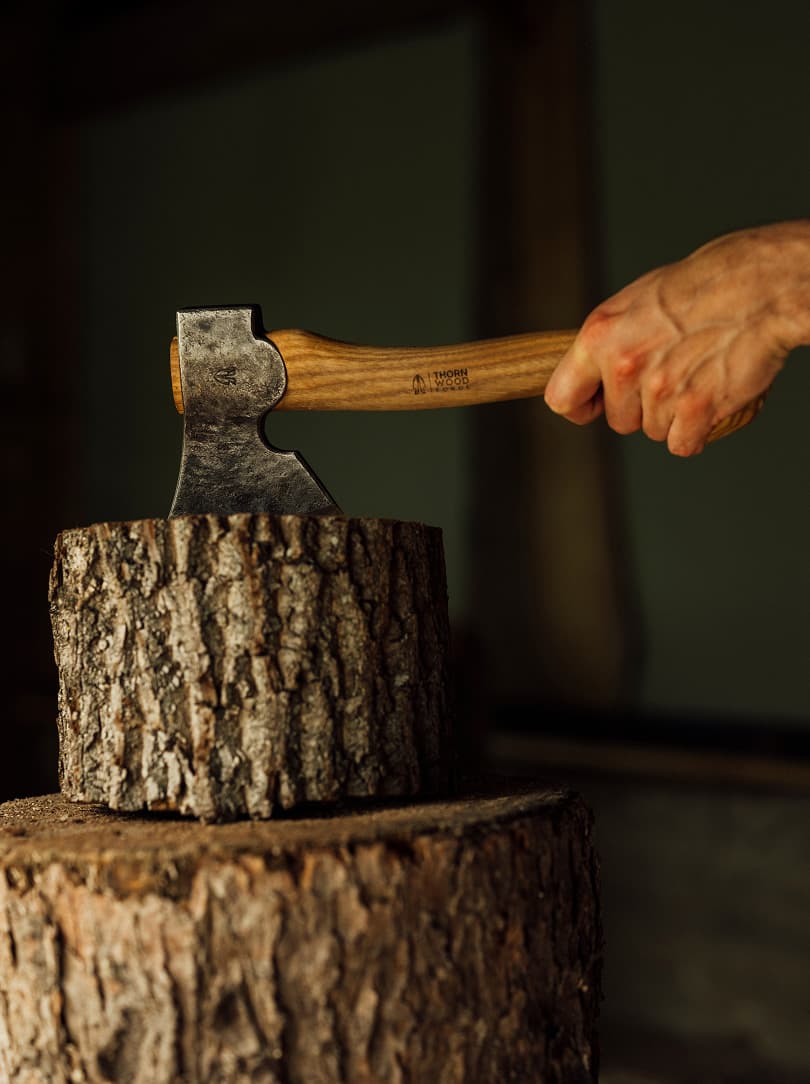
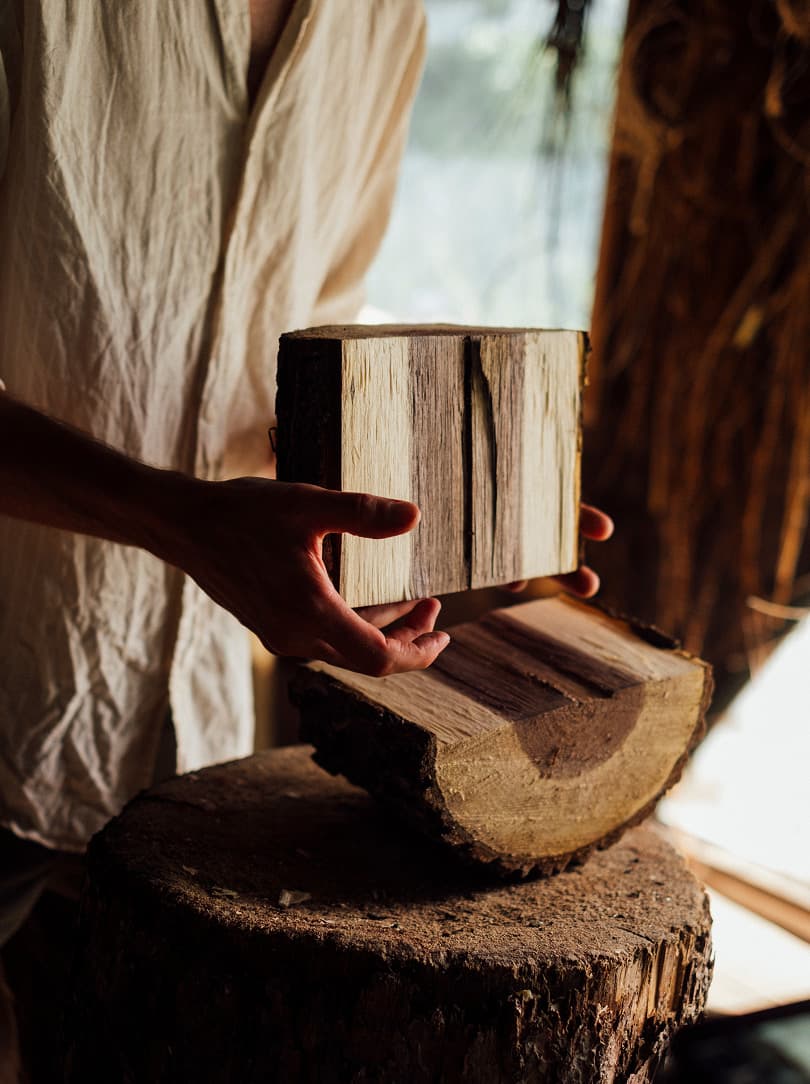
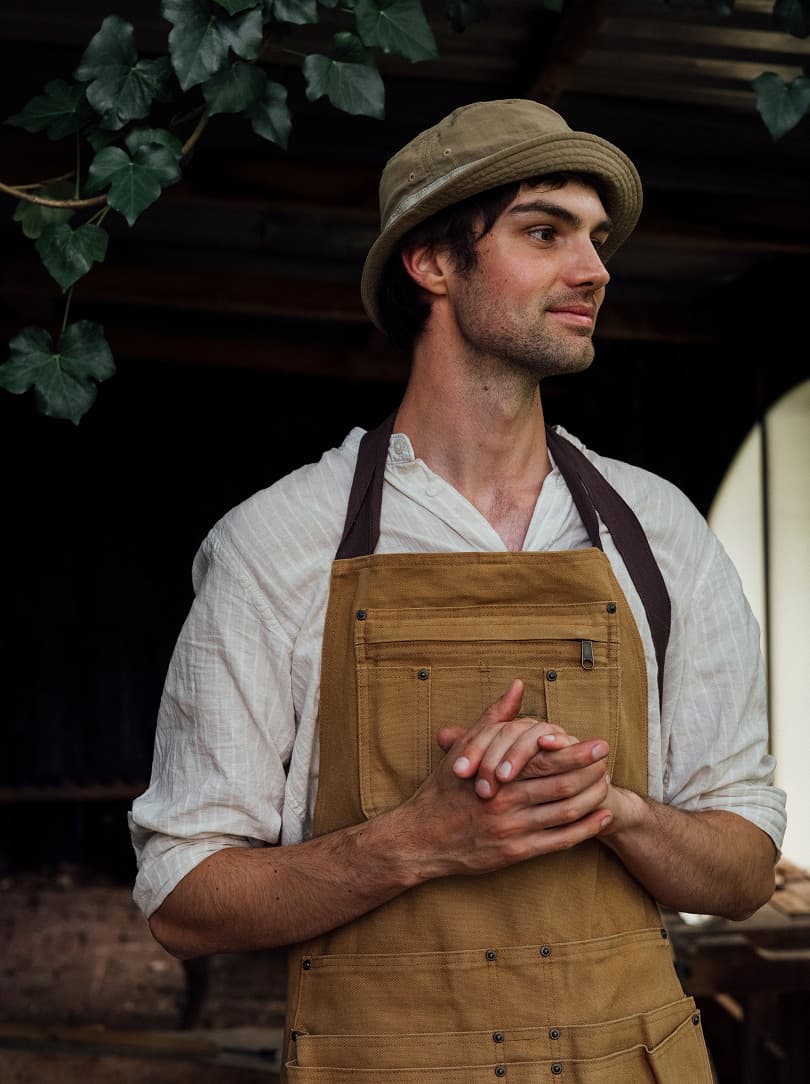
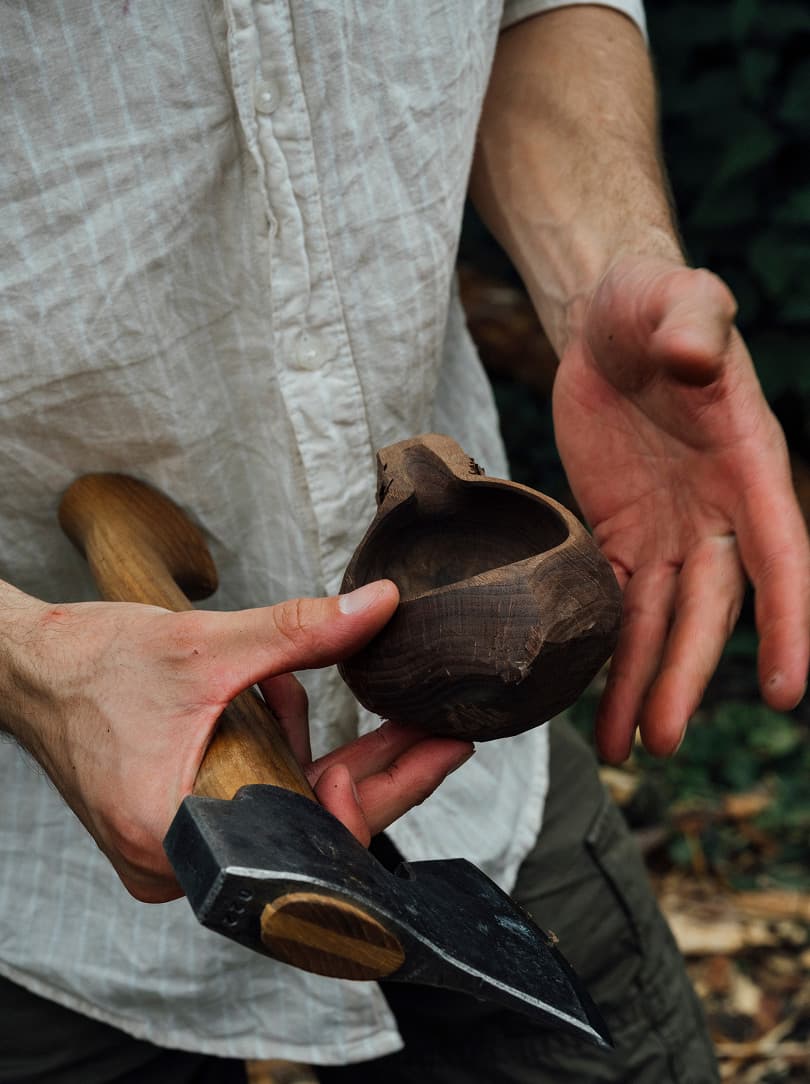
The pieces Samuel creates – each one carved, finished and posted to customers by hand from his Czech workshop – speak in reverent tones. Cups with soft, bulbous forms, elongated cooking spoons, pouring vessels with ultra-fine lips, shallow bowls with subtle undercuts and curves so smooth they feel water-worn. And yet, no sandpaper ever touches them. Every surface is refined using countless, meticulous knife strokes, each one tiny, deliberate and almost invisible. “Facets are like handwriting,” he says. “I leave them behind as a trace.”
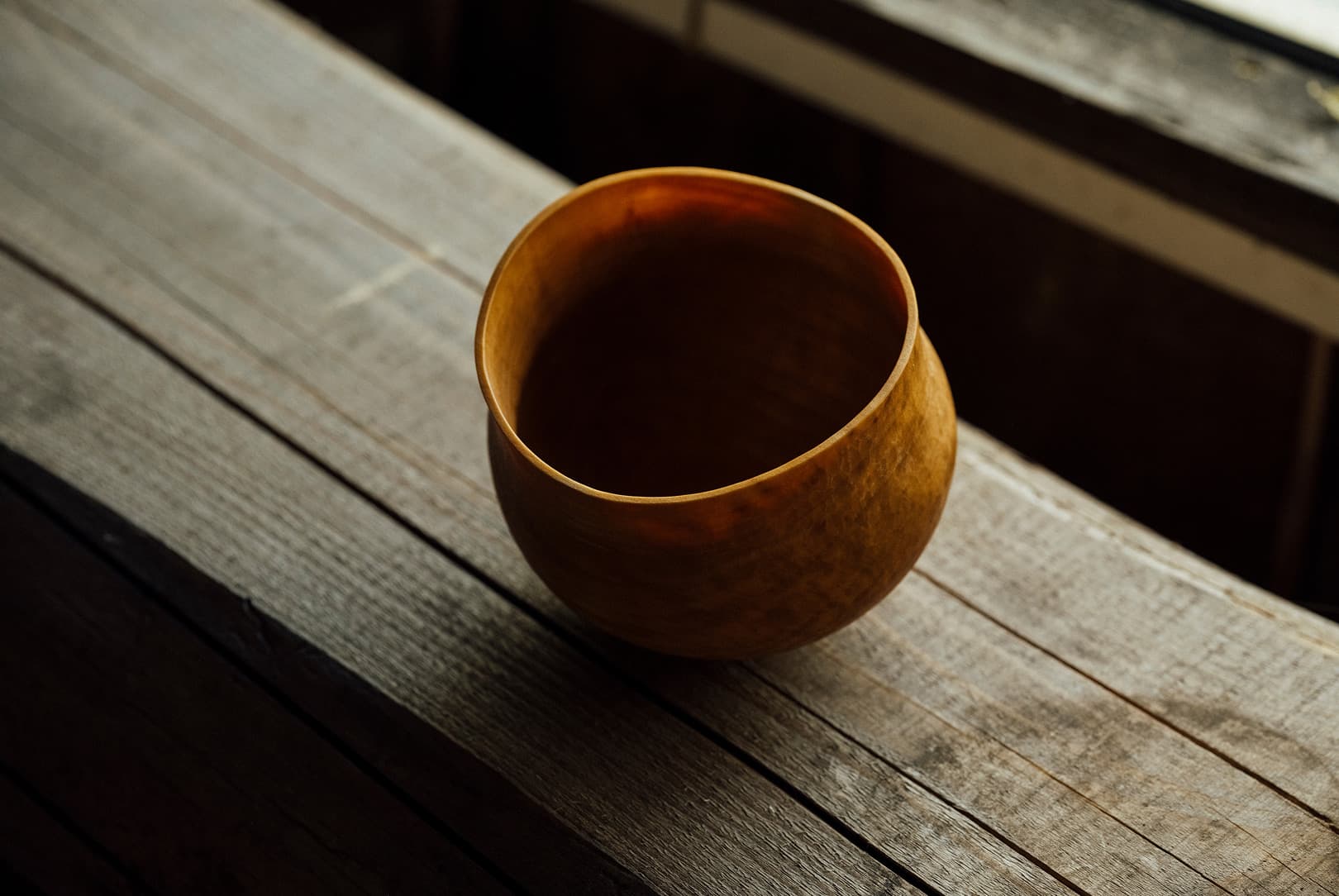
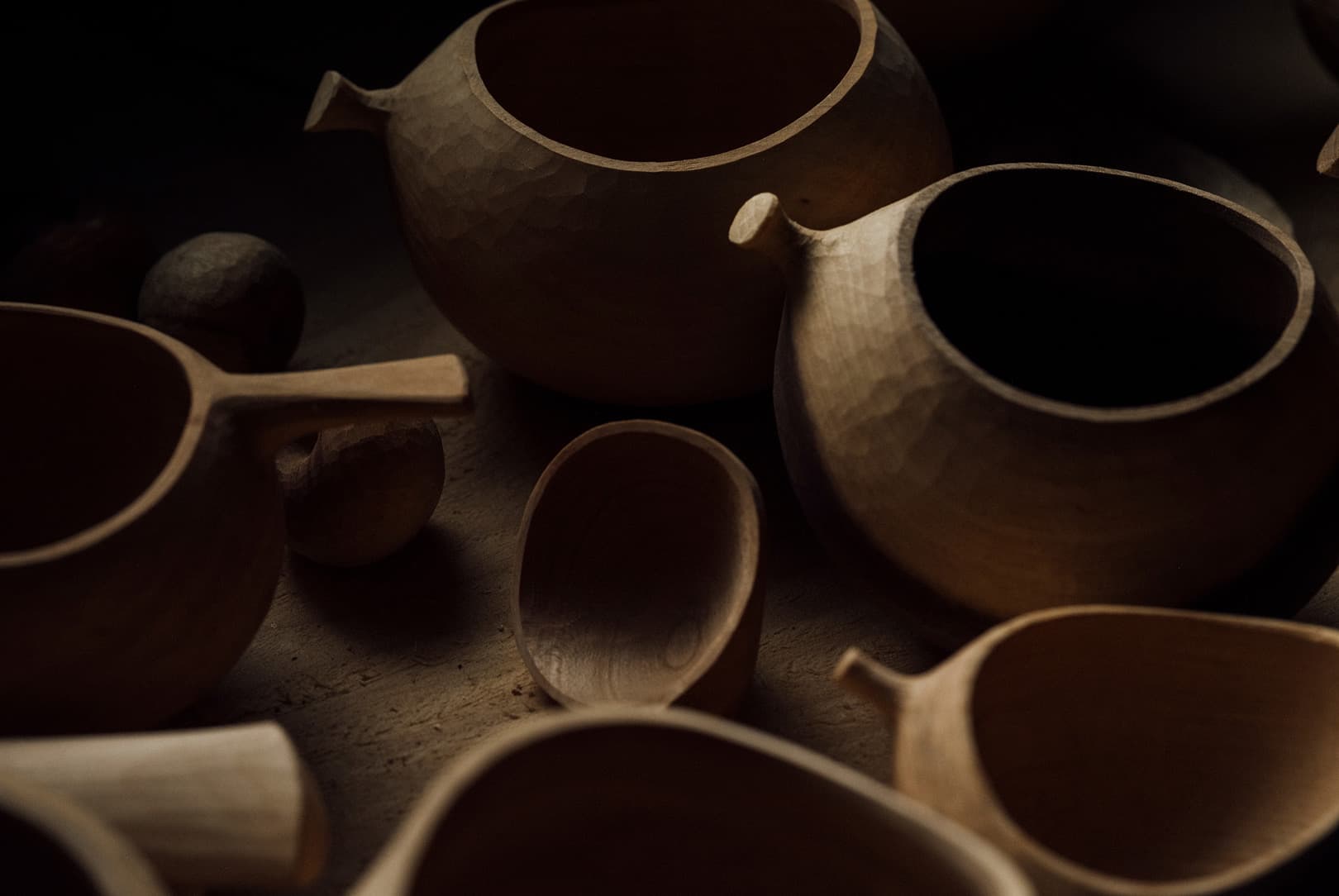
The result is a kind of sensory elegance, objects that feel both ancient and impossibly refined, like they’ve been shaped not just by skill, but by patience itself.
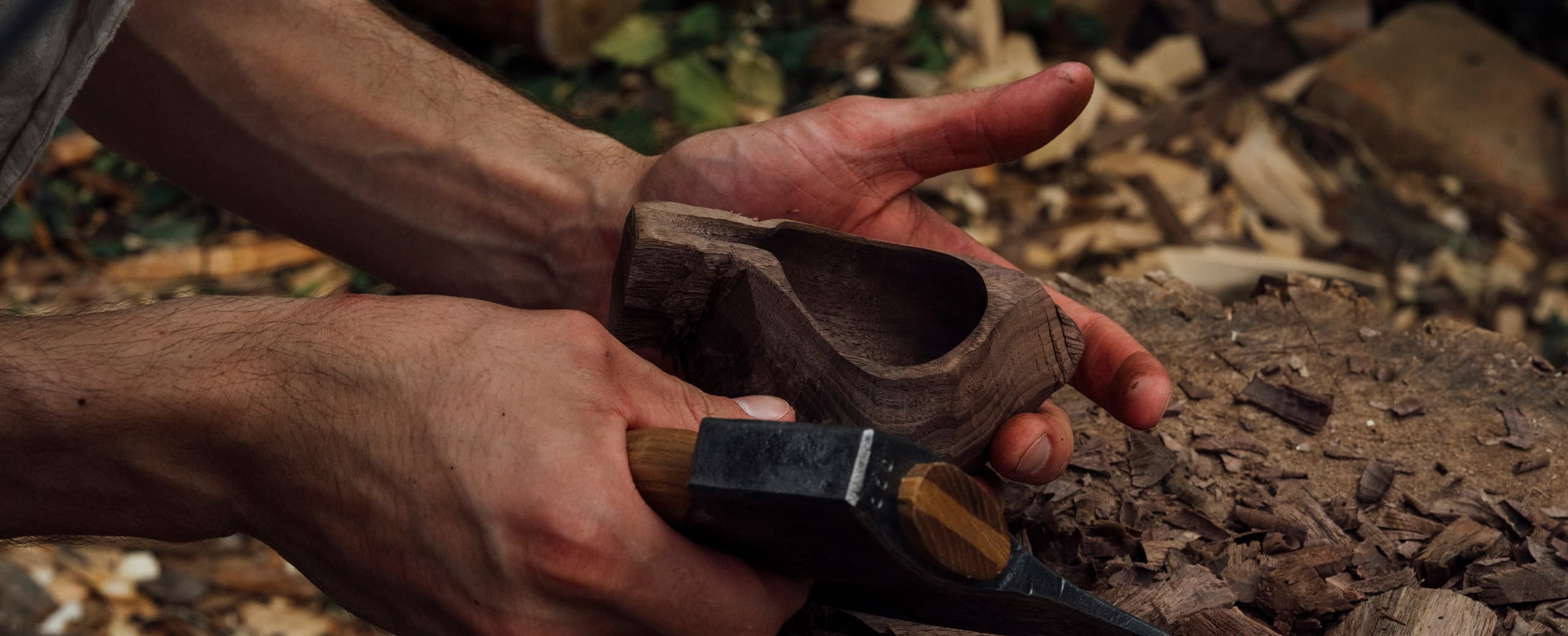
The piece Samuel is making today is one he has created especially for AGOBAY: a matcha pouring vessel. It has been designed to hold the exact volume of water needed for one cup of matcha, and is the first in a series of exclusive products he will make for us. In terms of the process, each one begins with a split – the initial break in the log that reveals how the wood wants to behave. “That split gives me a lot of information,” Samuel explains. “It allows me to visually place where the bulb, or the hollow, is going to sit.”
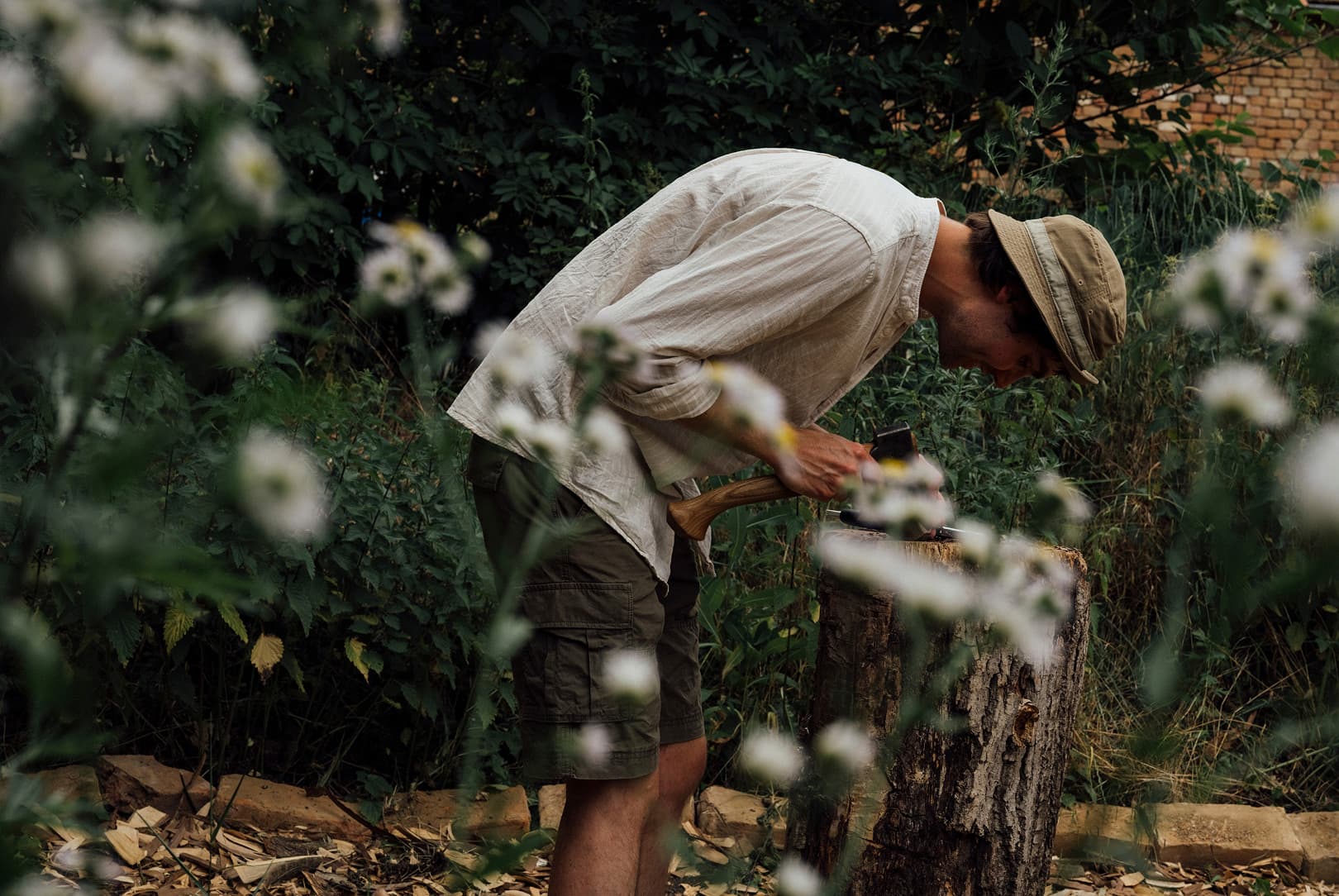
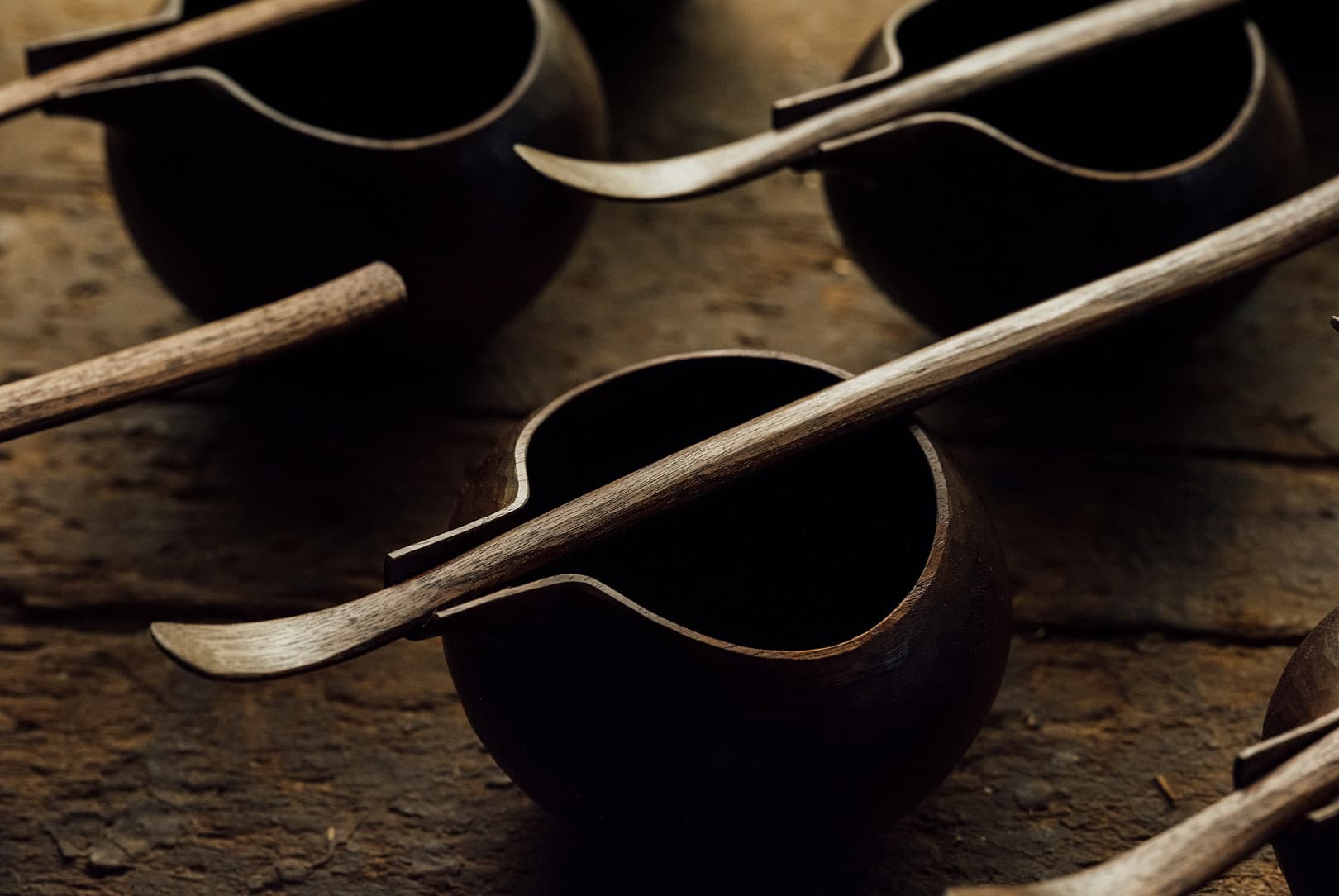
From there, the piece is clamped and excavated using a scooped axe and a hollowing tool until it reaches the desired depth. “I frequently test that depth or volume using a simple rice measure of 80 millilitres,” he continues. “And I see if the excavated hollow can hold that. If it doesn’t, I hollow again; if it does, I stop. That’s my measuring system.”
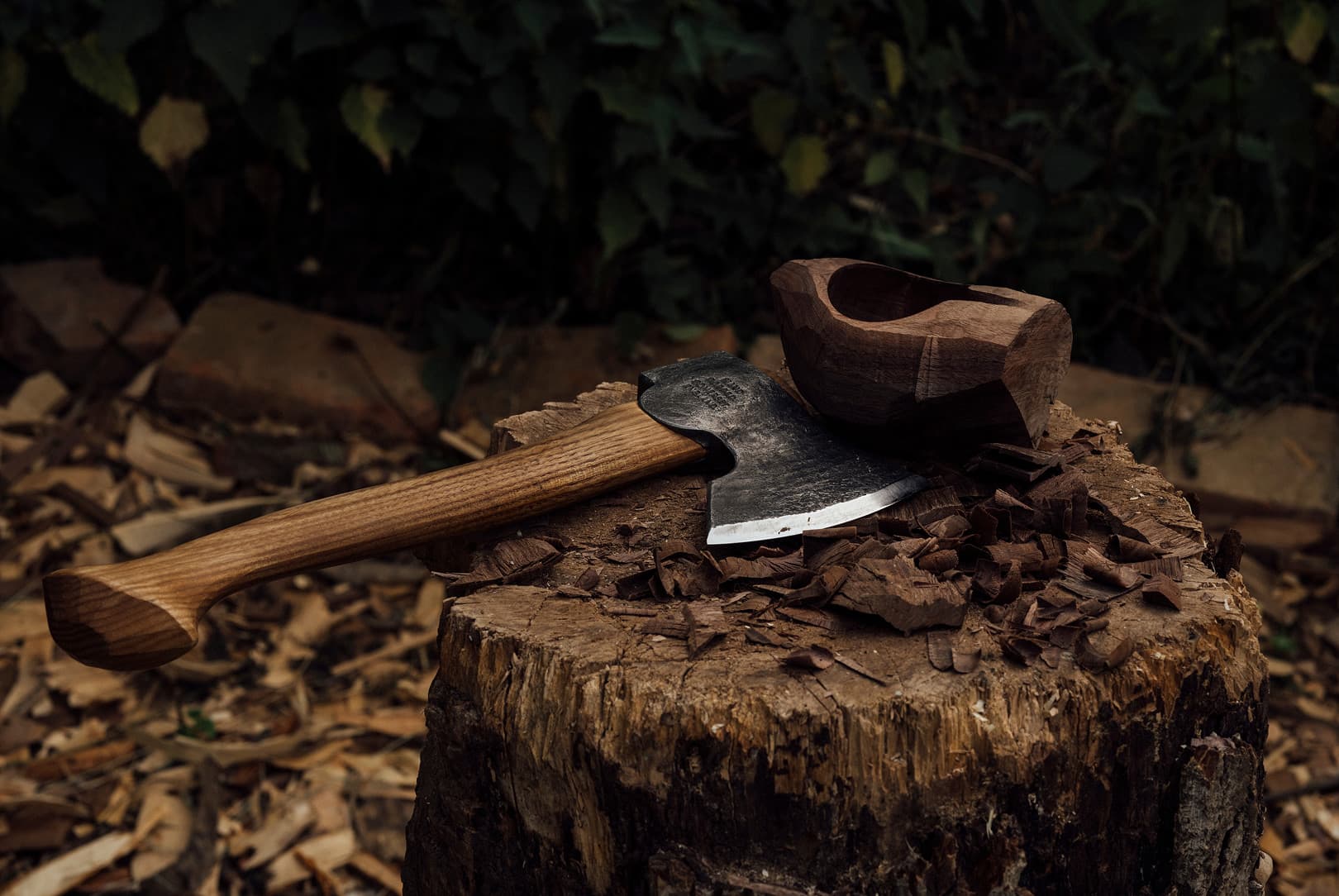
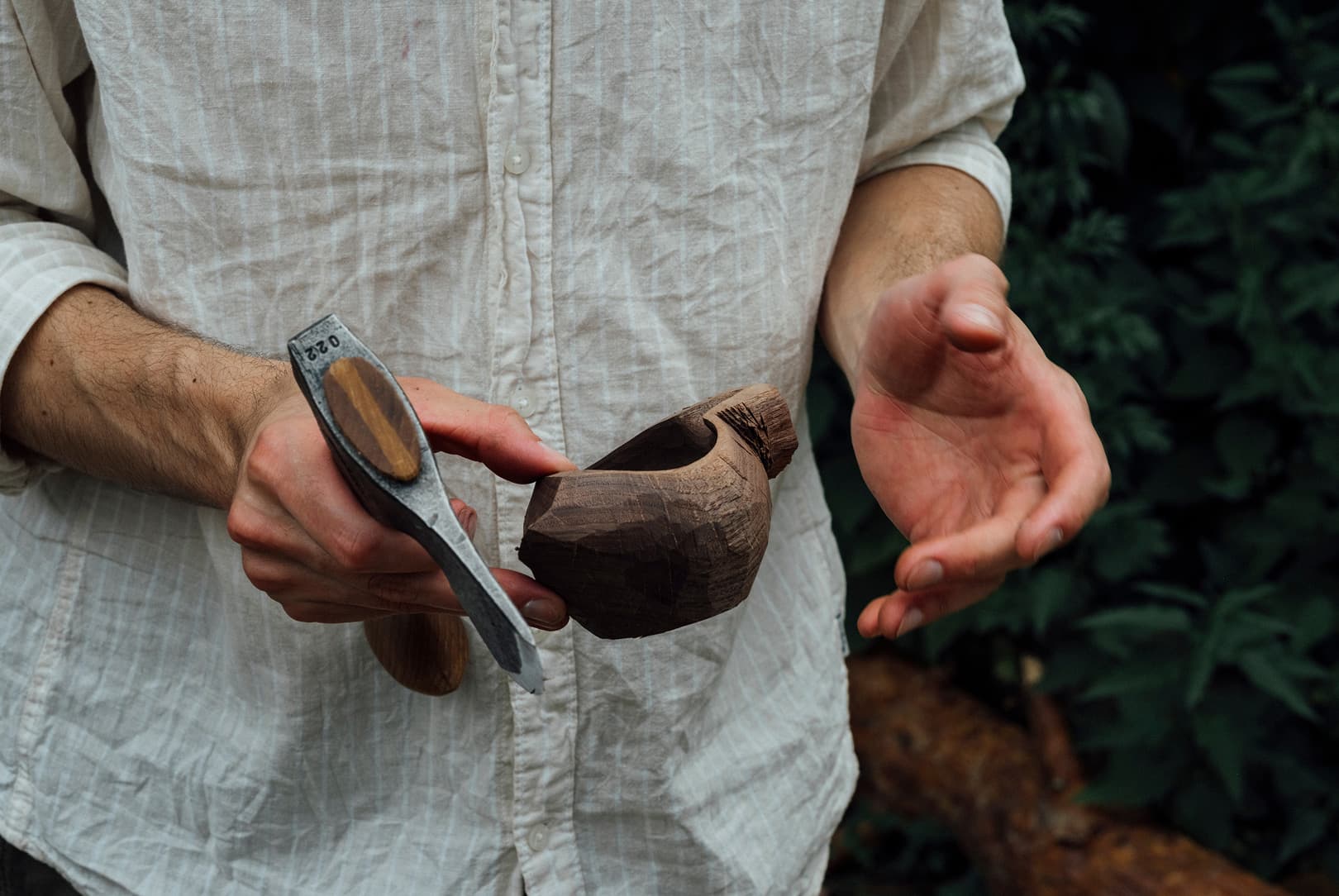
Once the inner bowl is shaped and smoothed, and the spout is formed, the vessel is released from the clamp and carved by hand into a final form. The drying process takes about two weeks, during which the shape may shift, crack or warp. “That’s another wonderful element of carving,” he says. “There’s an unpredictability in how the wood dries after the piece has been made.” After drying, Samuel returns to apply delicate finishing cuts and five coats of a natural tree-sap lacquer, allowing several days between each layer.
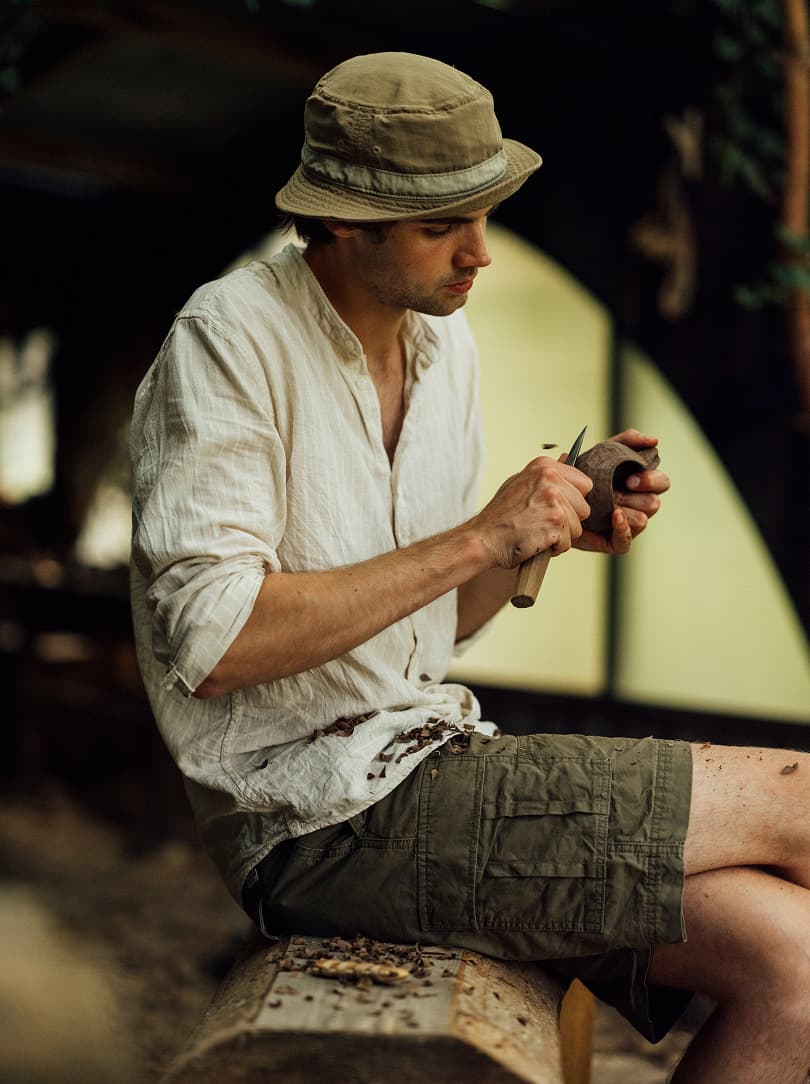
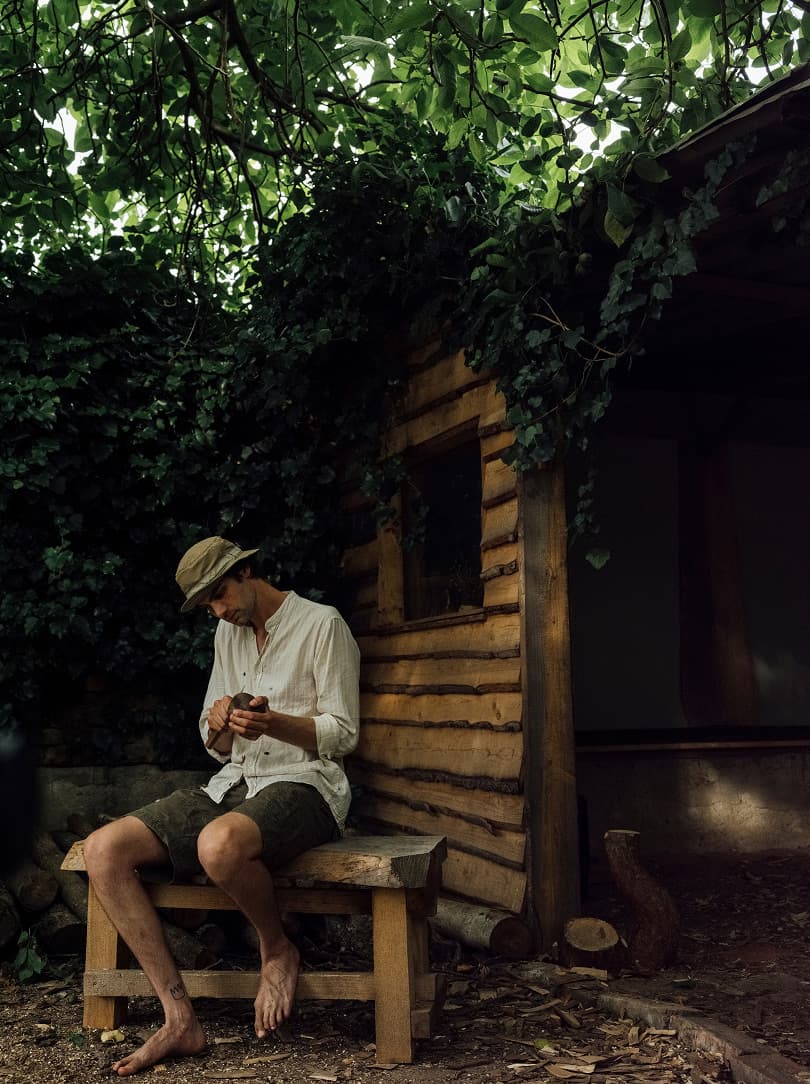

Finally, the piece cures for a full month – a patient process that embodies the meditative stillness behind every carved curve. “There’s something I love about watching the form emerge – like it’s revealing itself to me, not the other way around. I’m not forcing it. I’m listening.”
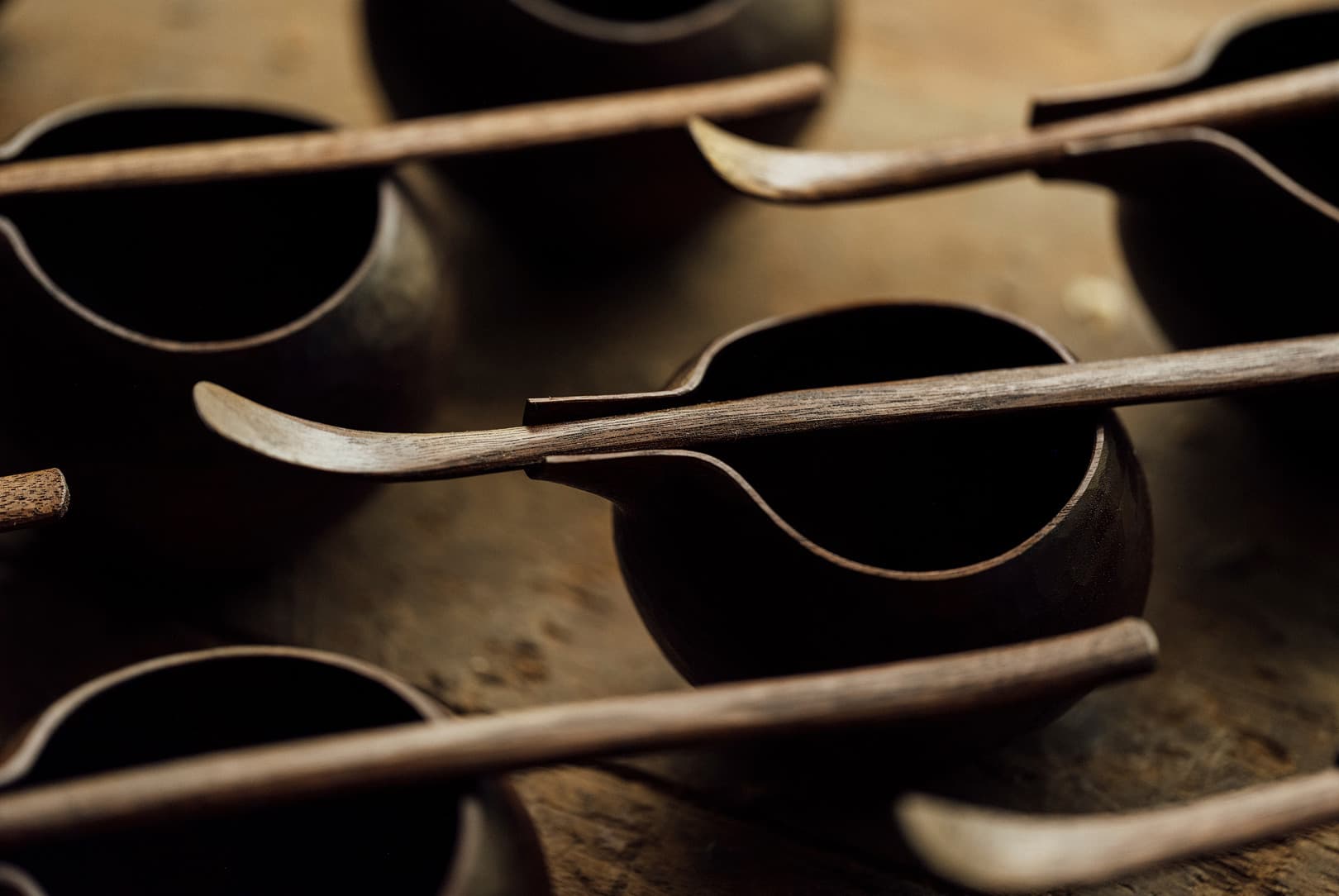
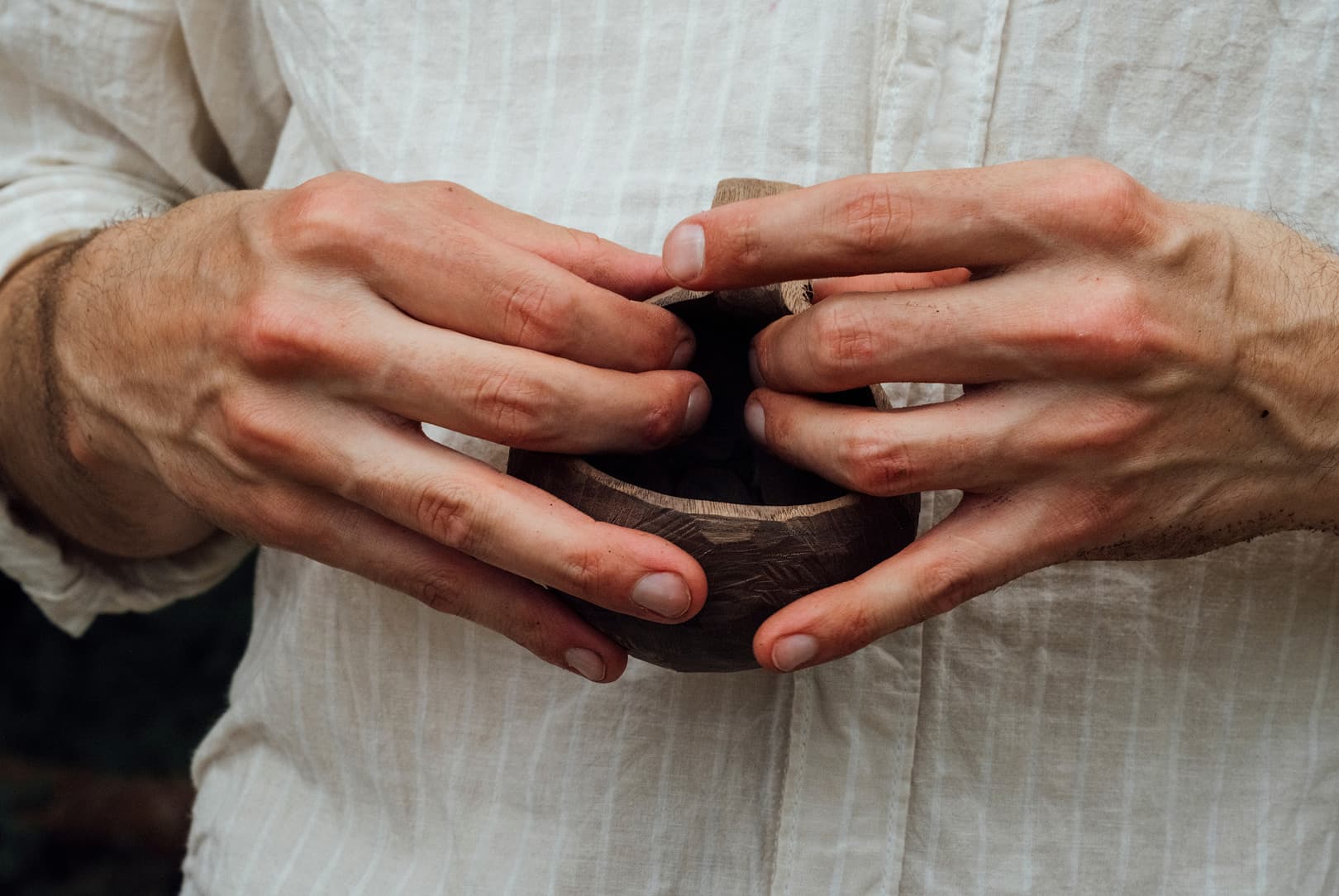
Samuel has also written a book, published in spring 2025. ‘The Green-Wood Carver: Slow Woodcraft for Beginners’ feels like a quiet offering to those standing where Samuel once stood: curious, overwhelmed, unsure where to begin. “It’s a holistic guide,” he says, “a walk through the forest of this craft to ignite a woodcarving journey for someone who’s never held a knife before.” Across its pages, the book gently ushers readers through the basics – choosing tools, sourcing fresh wood, understanding grain – before leading them into a series of simple, grounding projects.
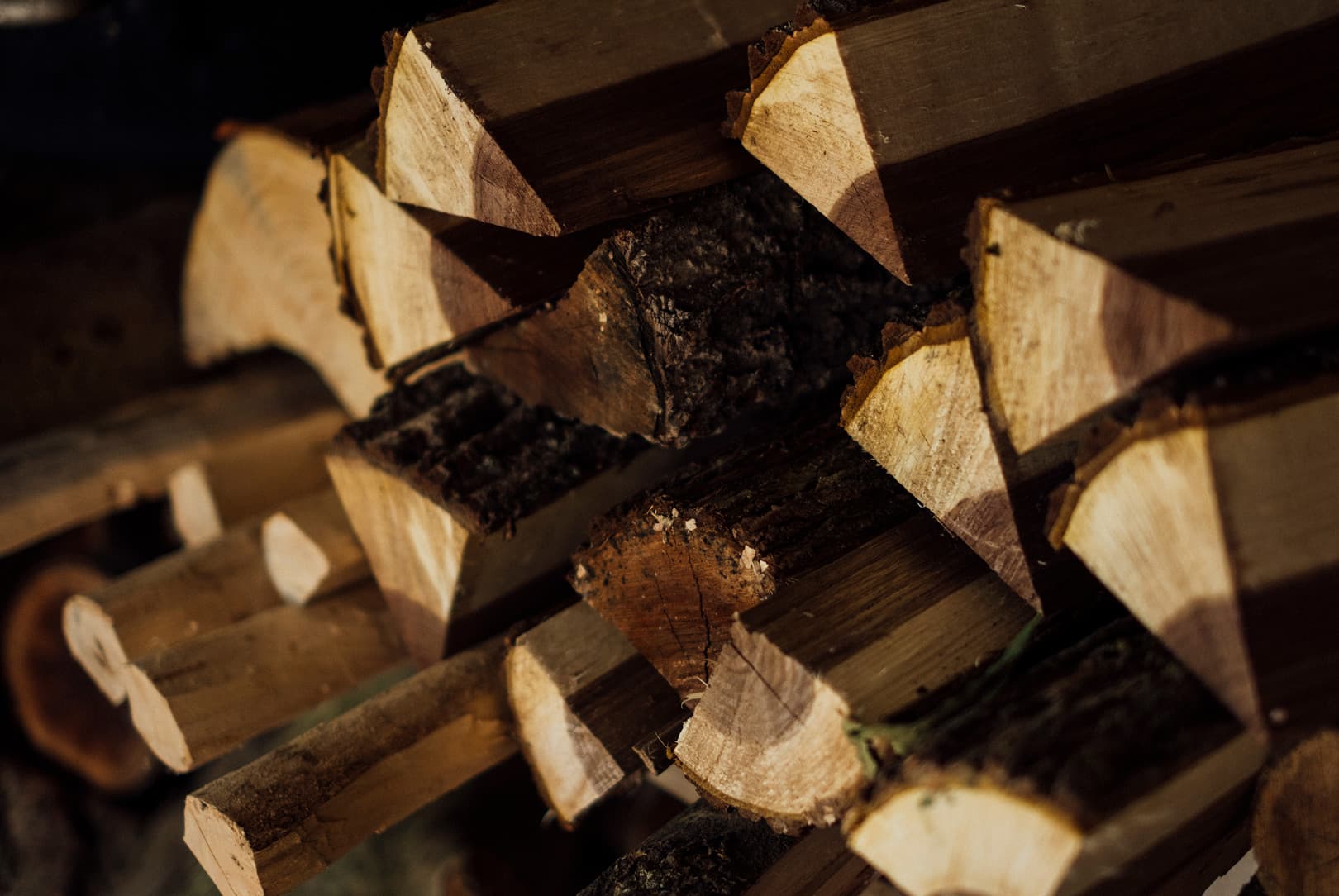

Laid out with clarity and warmth, the book is as tactile as the craft itself. Clean, effortlessly stylish photography, step-by-step illustrations and Samuel’s calm, conversational tone make it as inviting to leaf through as it is to follow. “The first half sets you up,” he explains. “Not just technically, but mentally, too. And the second half is just about making. A spoon. A cup. A small project to slow down with.” Like his practice, the book doesn’t rush. It simply encourages. And for anyone who’s felt the pull of the handmade, it offers a path in, one cut at a time.
“What I miss about Devon is the sea. I miss the power of water. I miss lying back and feeling something move beneath me that I can’t control. That vulnerability. I miss surfing.”
Samuel also teaches internationally. About three years into carving, as he began to feel better and gradually left the care system, he attended a series of talks in London about social prescribing: community-based approaches to health and wellbeing. The idea struck a chord. He began offering carving workshops centred on slowness, presence and the restorative power of making.
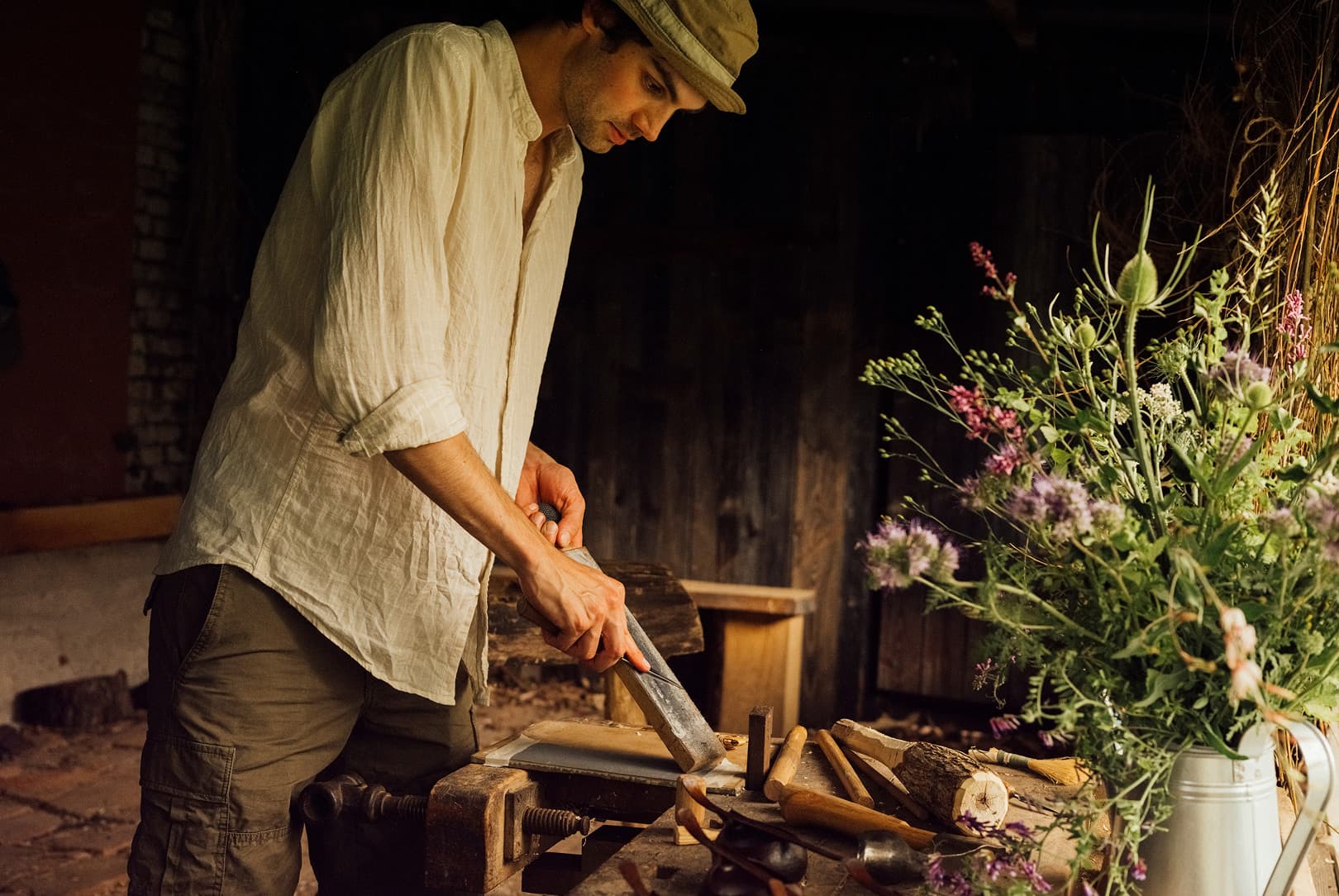
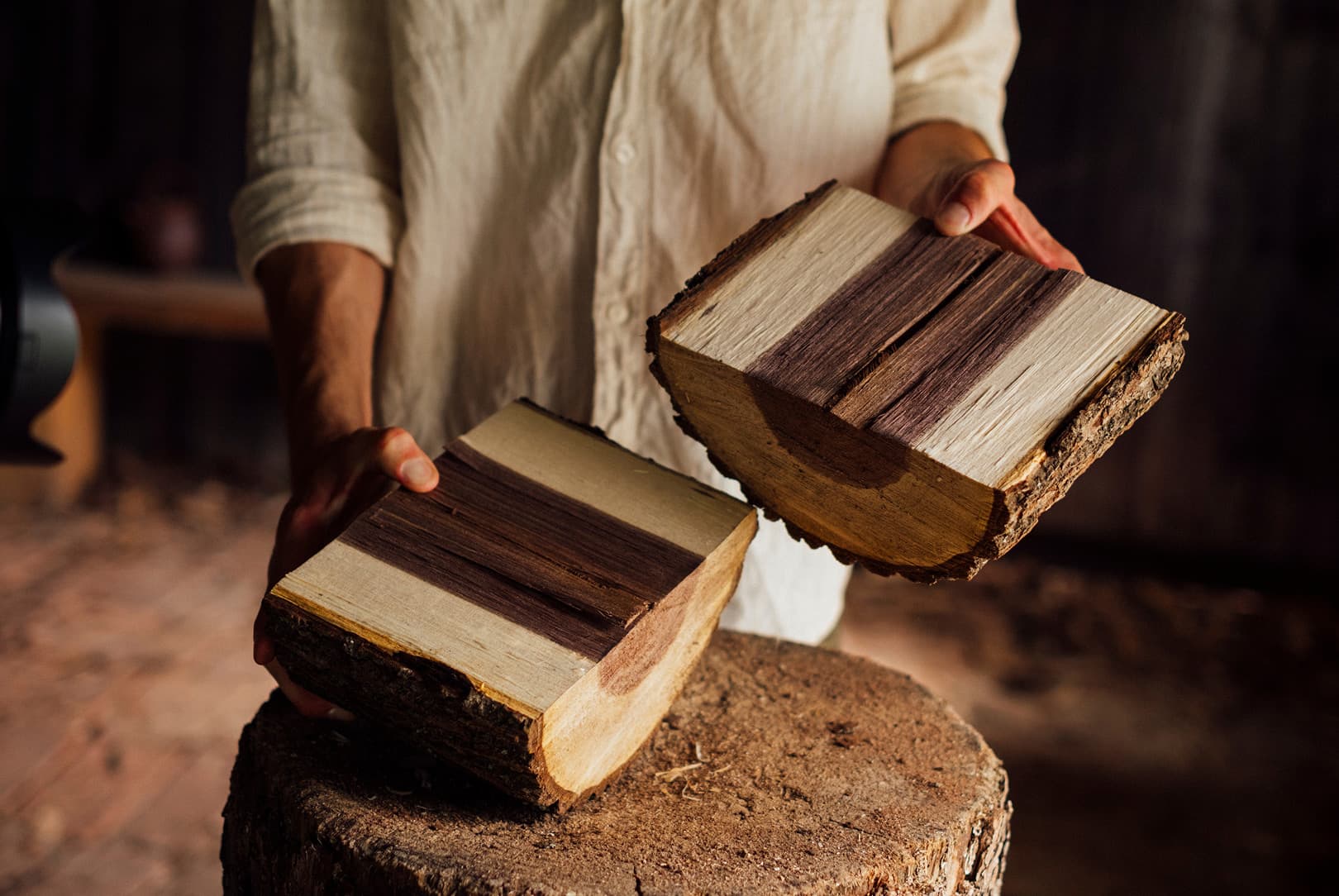
Joining the not-for-profit cooperative London Green Wood, he designed a spoon carving course that would go on to teach more than a thousand people. “Some of them are full-time carvers now,” he says with a satisfied smile. “A lot of them teach others. That’s the part that means the most to me.” Today, Samuel leads workshops across Europe and further abroad – immersive days that offer not just technique, but space to reset, reconnect and learn through your hands. His forthcoming schedule includes courses in the UK, Denmark, Belgium and Japan, a tour on which his wife and daughter will accompany him.
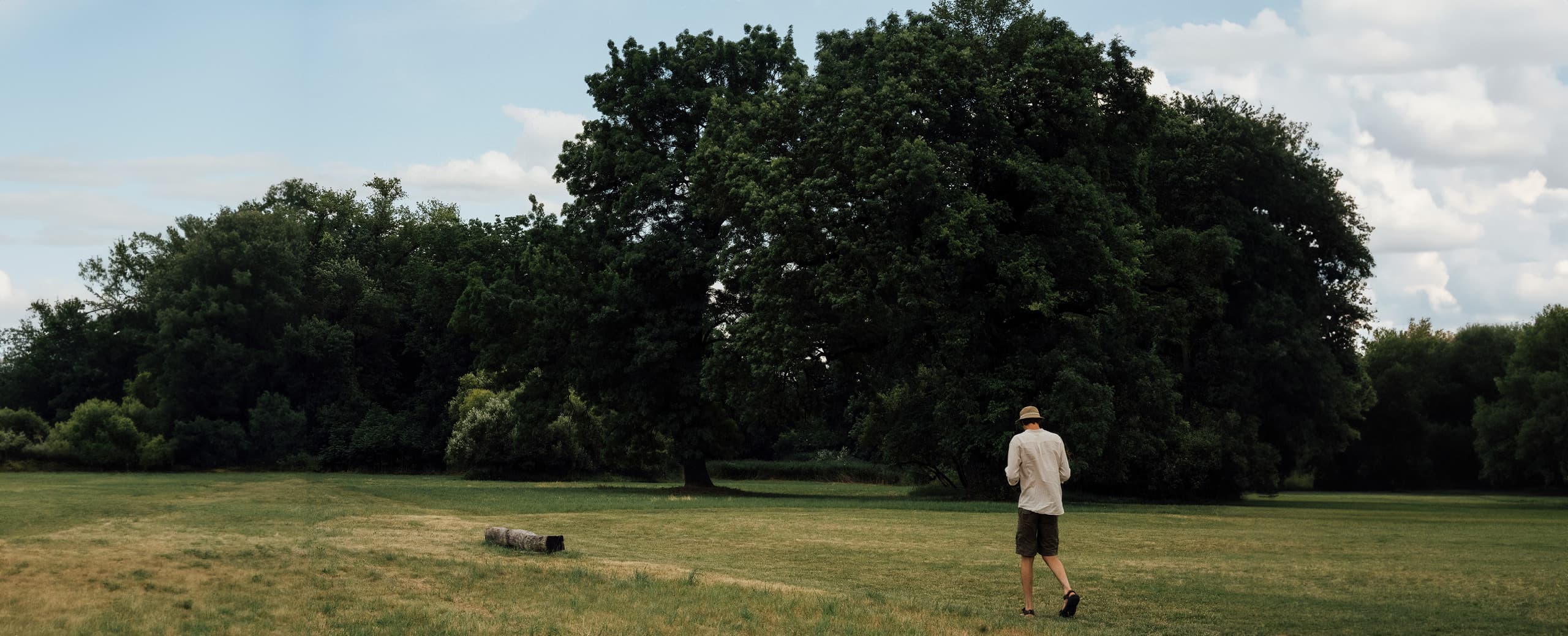
As we leave his workshop the sky darkens with cloud cover and a strong wind suddenly picks up. A dramatic storm is on its way: “My favourite weather for carving in,” Samuel declares with delight as he holds his arms out and closes his eyes to feel the changing elements. Kateřina and Nora meet us as we cross through the orchard. Samuel’s daughter runs to him, happily repeating “Da-da” as he scoops her up and lifts her above his head so she can pluck cherries from the tree. One of her favourite pastimes is collecting eggs from the chickens – then, as Samuel adds with an exasperated chuckle, also occasionally dropping them inside the house.
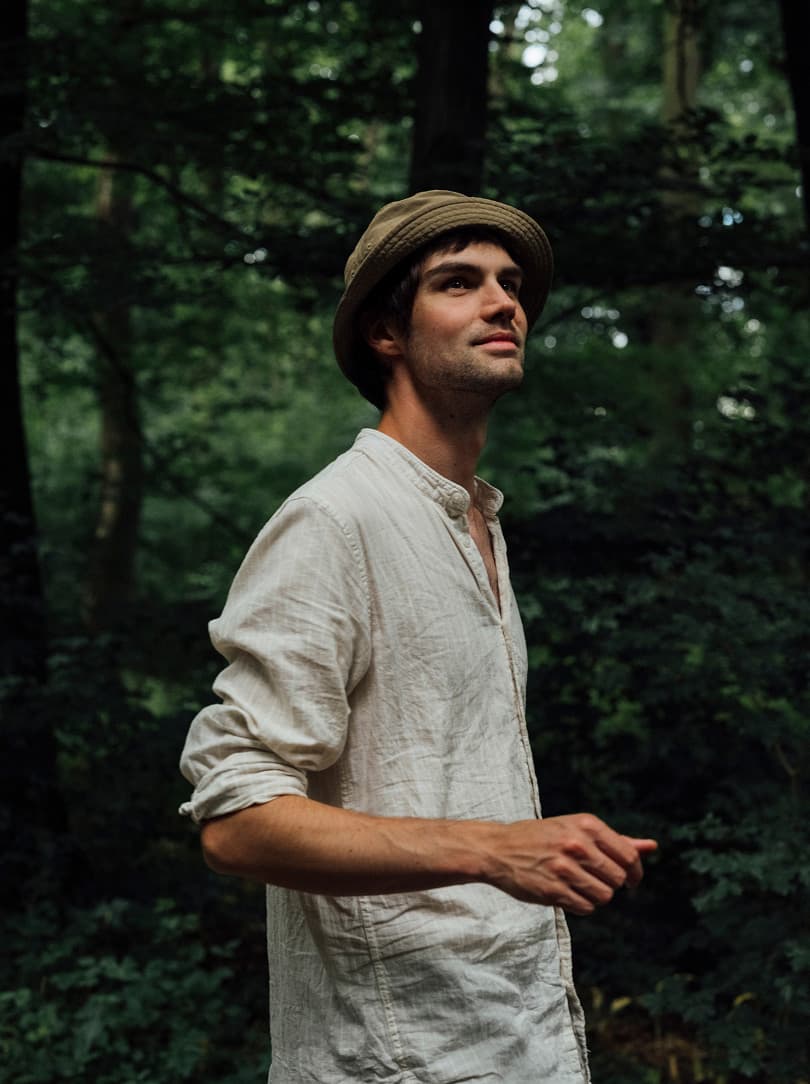
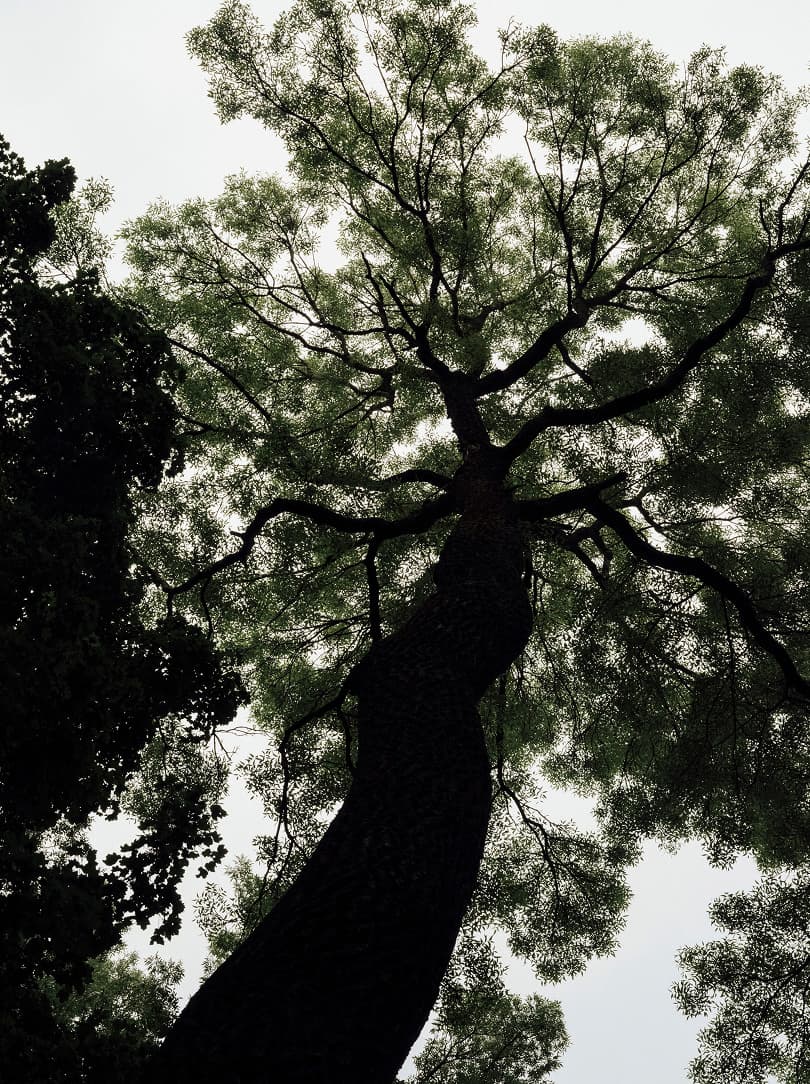
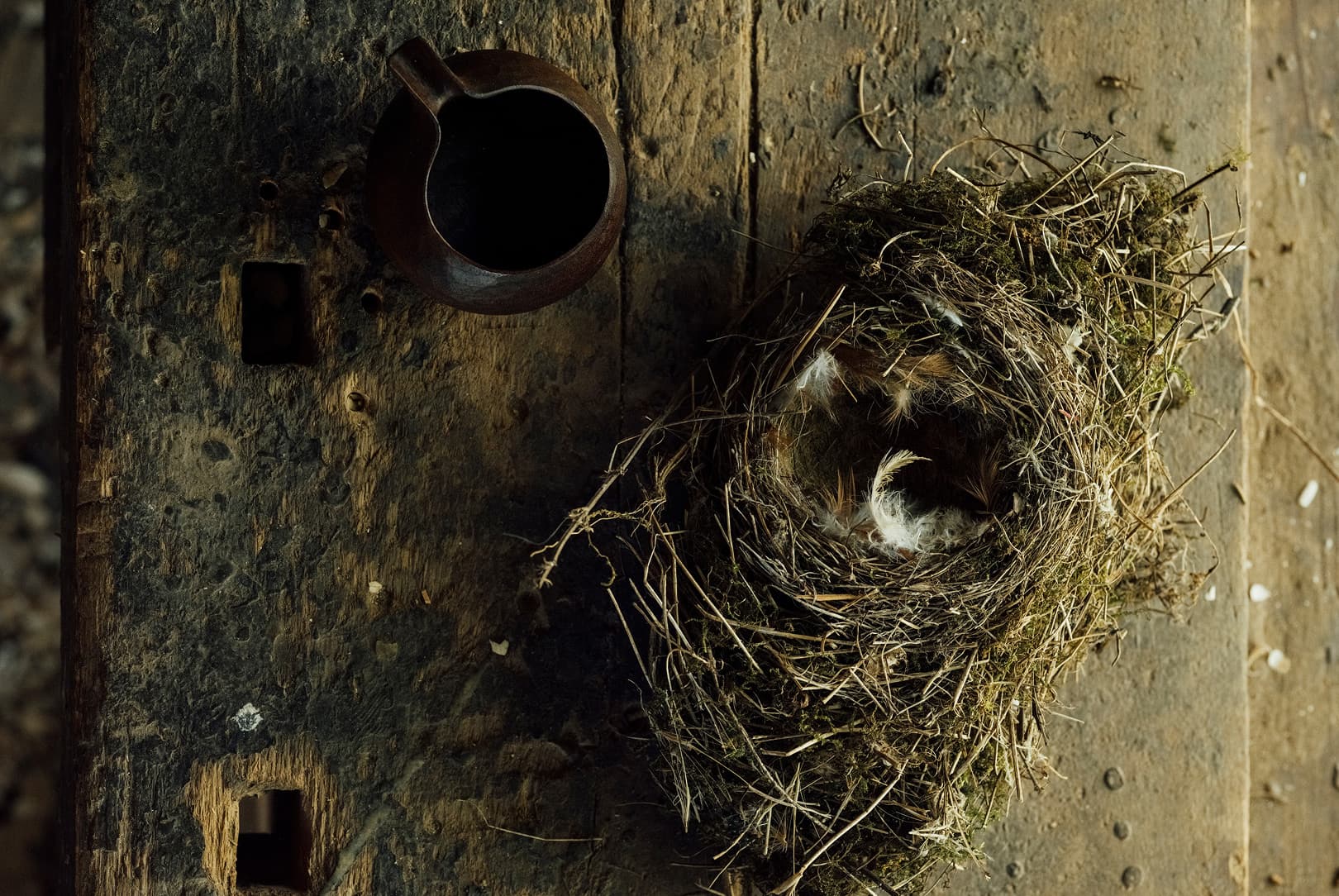
Living in Czechia reminds him of Devon. “Except it lacks the water,” he says with a trace of longing. “What I miss about Devon is the sea. I miss the power of water. I miss lying back and feeling something move beneath me that I can’t control. That vulnerability. I miss surfing.” But this land suits him. The pace. The seasons. The rituals of growing, harvesting, carving, teaching, resting. Here, he’s raising his daughter. Quietly pushing against the tide of speed, disposability and disconnection.
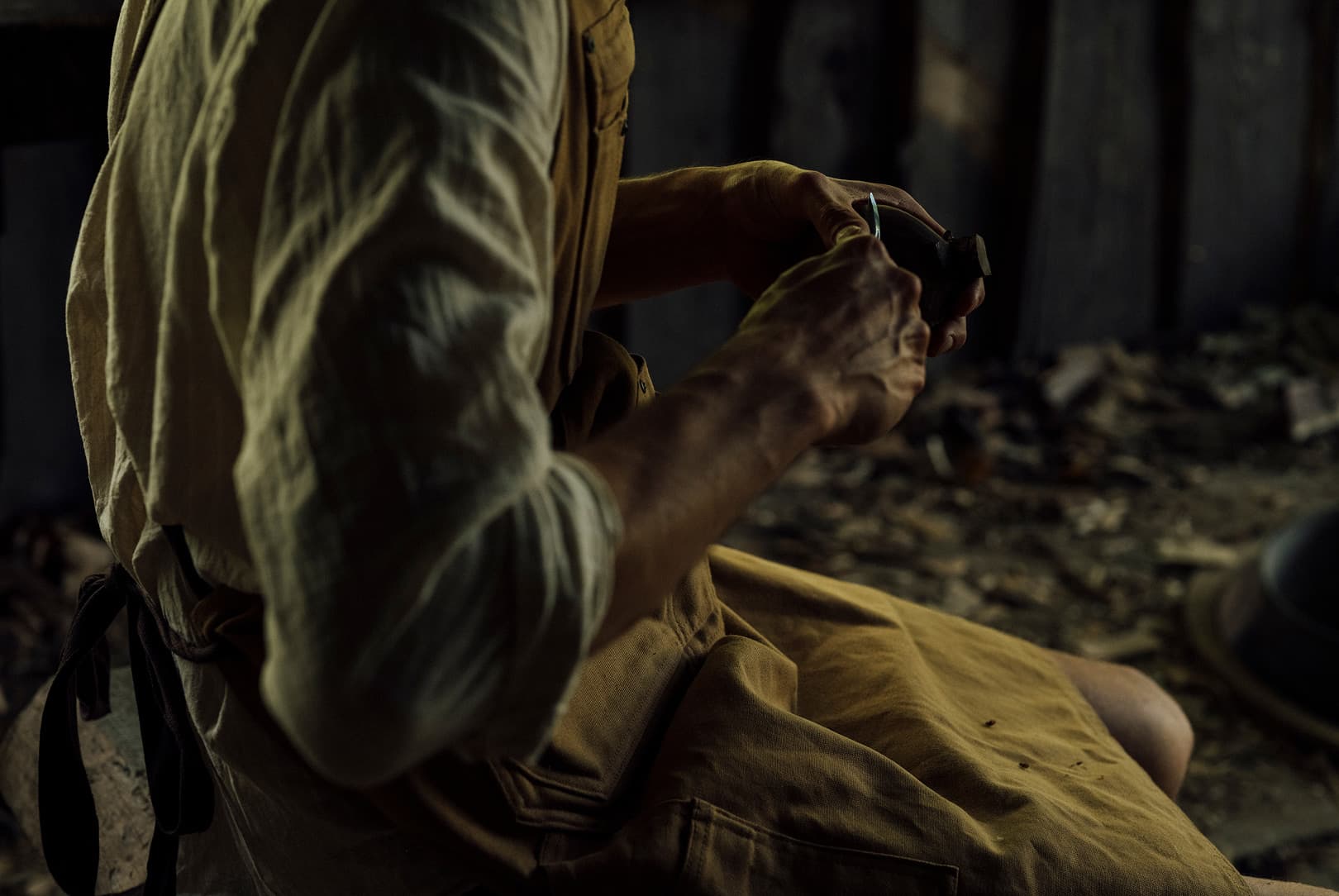

“The most important life lesson I’ve learned,” Samuel says, as we gather our belongings inside his home, “is to make for the sake of making. Not because you have to. Just because it feels good. Because it heals. Because it slows you down.” He smiles, lifting one of his finely carved vessels from the table, his fingertips gliding over its smooth rim – reading the wood like Braille. “Everything you need to know,” he says, “is already in the grain.” Outside, our car idles in the cul-de-sac. The young family walks us out, and we feel a hint of sadness as we say goodbye. The first heavy raindrops begin to fall. Nora, who shed her shyness as the day unfolded, smiles sweetly and offers a small wave. Their depth, their contentedness, their quiet rebellion – choosing slowness, choosing craft, choosing each other – has left its mark on us. Not loudly, but profoundly.
